Before traveling to Berlin, a fellow traveler told us that Berlin was the “least German city” in Germany. That had us scratching our heads, wondering what he meant. Until we got to Berlin.
Berlin is not like the cities of Munich, Nuremberg, or Hamburg. Berlin is grittier, edgier, and has more of the urban vibe you get in cities like New York City and Chicago. In Berlin, there are old, historical sites and newer areas with modern, cutting edge architecture. Thrown into the mix are bits and pieces of the Berlin Wall and WWII history.
Many of Berlin’s sites have something to do with World War II, but there are also beautiful squares to visit, old neighborhoods to wander through, and great restaurants to try. The list of places to visit is long, so long that it really takes at least four or five days to see “all” of Berlin.
We came up with 28 things to do in Berlin. Yes, that’s a huge list! Don’t feel like you have to see and do everything. The last thing you want is for your holiday to feel like a chore. Use this list as a guide to pick out the spots that look the most interesting to you.
Enjoy!
28 Things to Do in Berlin
1. The Berlin Wall
You can’t visit Berlin without seeing the Berlin Wall. Fortunately, sections of the Wall still stand throughout the city, so seeing at least one chunk of this piece of history is easy to do.
A Quick History Lesson about the Berlin Wall
The Berlin Wall (Berliner Mauer in German) is an ugly, concrete wall that was erected in 1961 to divide East Berlin from West Berlin. The wall was constructed by East Germany to “protect its people” from the “fascists” in West Germany, but it was really built to stop the flow of East Germans from escaping into West Germany.
The Berlin Wall became a symbol of the Cold War. For almost 30 years the wall divided the city, friends, and family members.
In late 1989, after a series of revolutions in Eastern Bloc countries, East Germany allowed its citizens to visit West Germany. Ecstatic crowds climbed the walls and began chipping away with chisels and hammers.
East and West Germany were unified on October 3, 1990, almost one year after the fall of the Berlin Wall.
Most of the wall is now gone, however, several sections still stand, memorials to this important piece of history. There is a permanent line drawn across Berlin where the wall once stood. As we walked through the city, it was surreal to think that less than thirty years ago this was a divided, much more somber place.
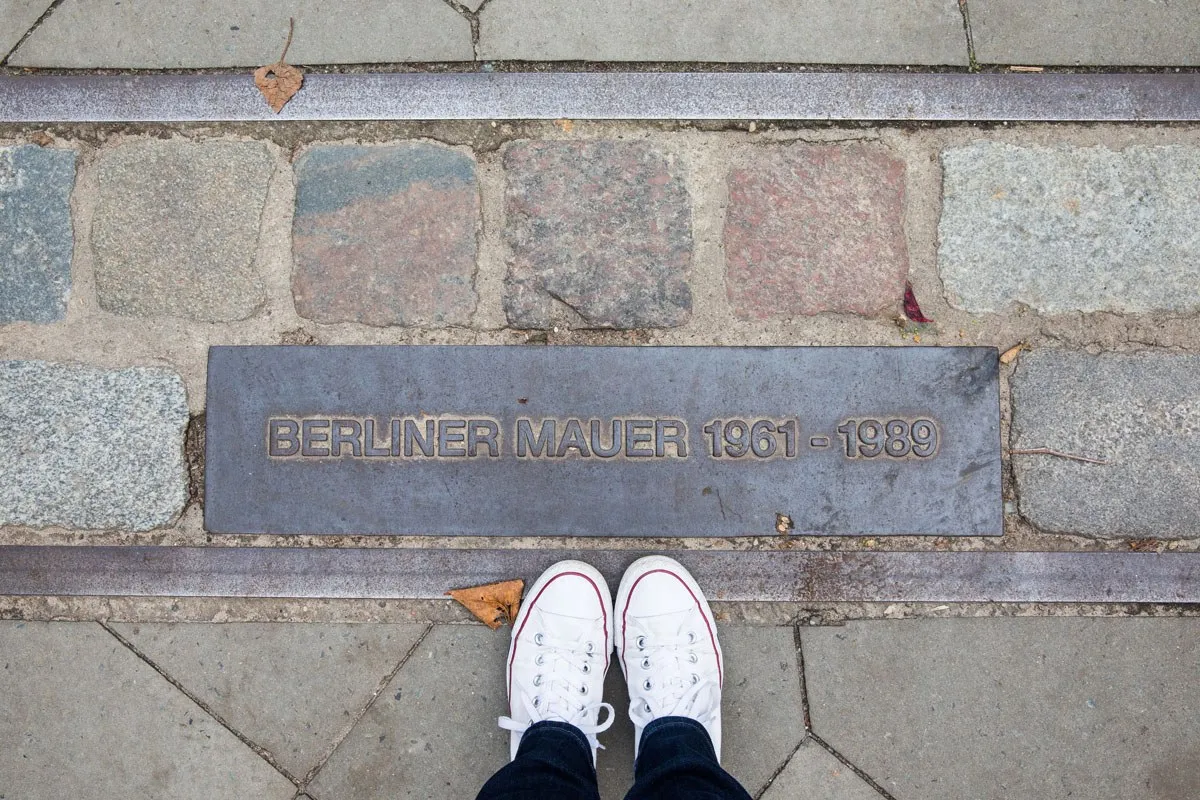
The Berlin Wall Memorial (Gedenkstatte Berliner Mauer)
If you want to see what the Berlin Wall really looked like, visit the Berlin Wall Memorial.
The Berlin Wall was more than just a concrete wall dividing the city. The wall itself was not sufficient to prevent determined East Germans from climbing over into free West Germany. Along the East German portion of the wall was the “death strip,” a wide area filled with watchtowers, trip-wire machine guns, floodlights, and guard dogs. Over 100 people died trying to escape across the wall.
At the Berlin Memorial, a portion of the wall and the “death strip” are preserved for visitors to see.
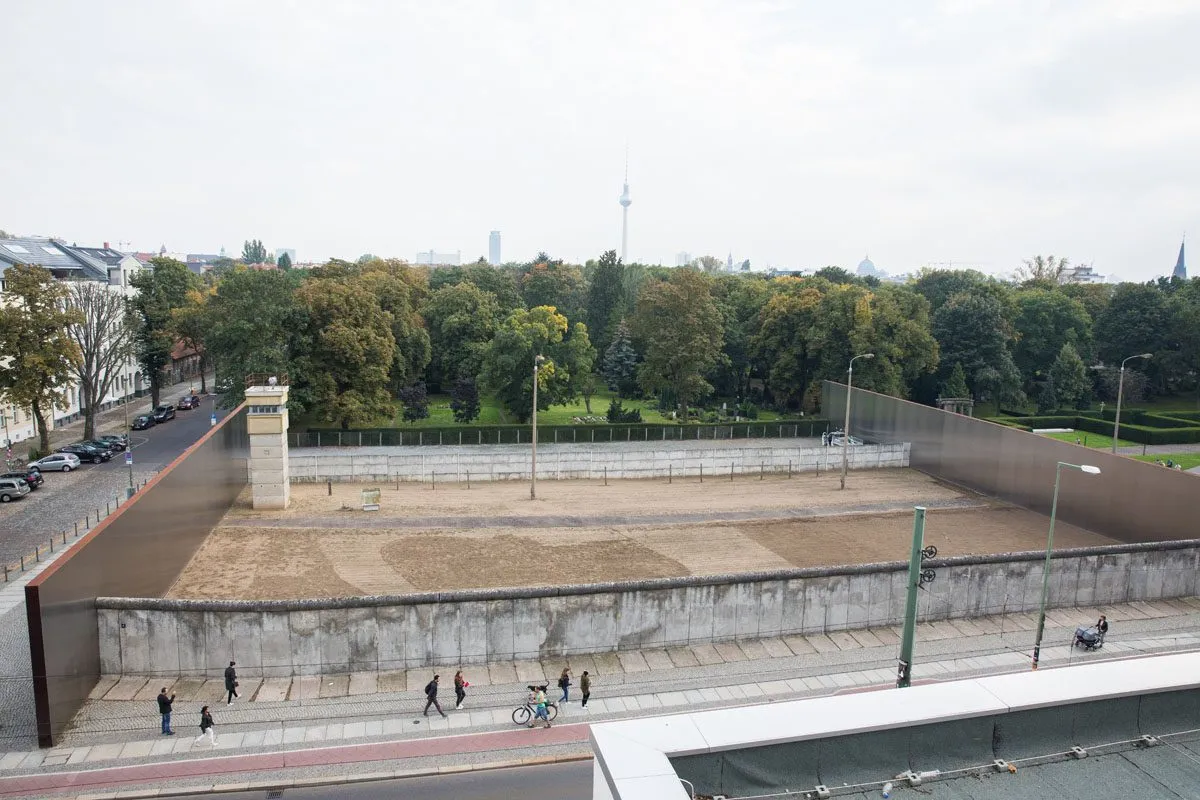
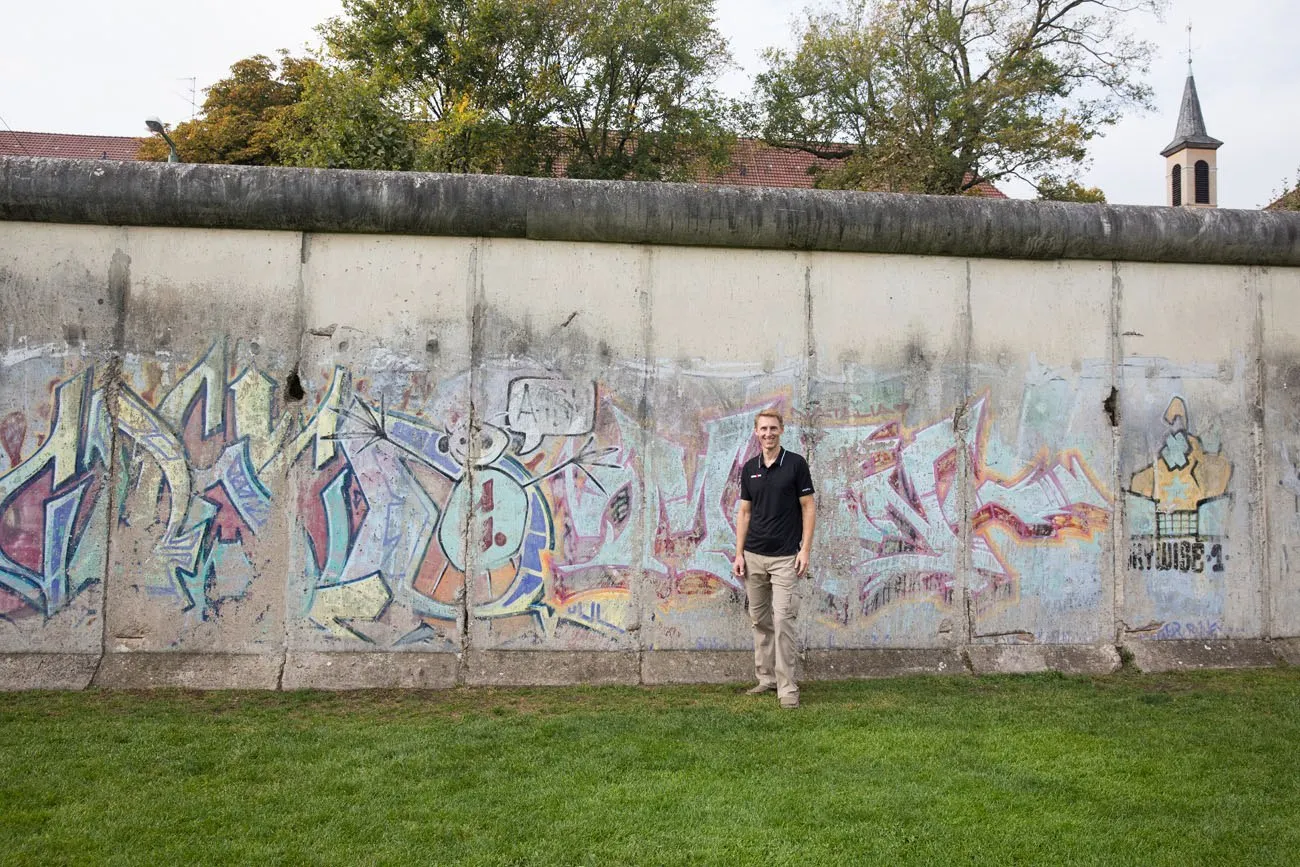
Location: M10 Tram, Gedenkstatte Berliner Mauer stop
Cost: Free
Topography of Terror
The Topography of Terror is built on the site where the headquarters of the Secret State Police, the SS, and the Reich Security main office were located during the “Third Reich.” Outside, along a portion of the Berlin Wall, are permanent exhibitions documenting what went on in Germany during WWII. It’s an informative, sobering look at the terrible events that happened here. You can also go inside the Documentation Center to learn more about the war crimes of the Third Reich.
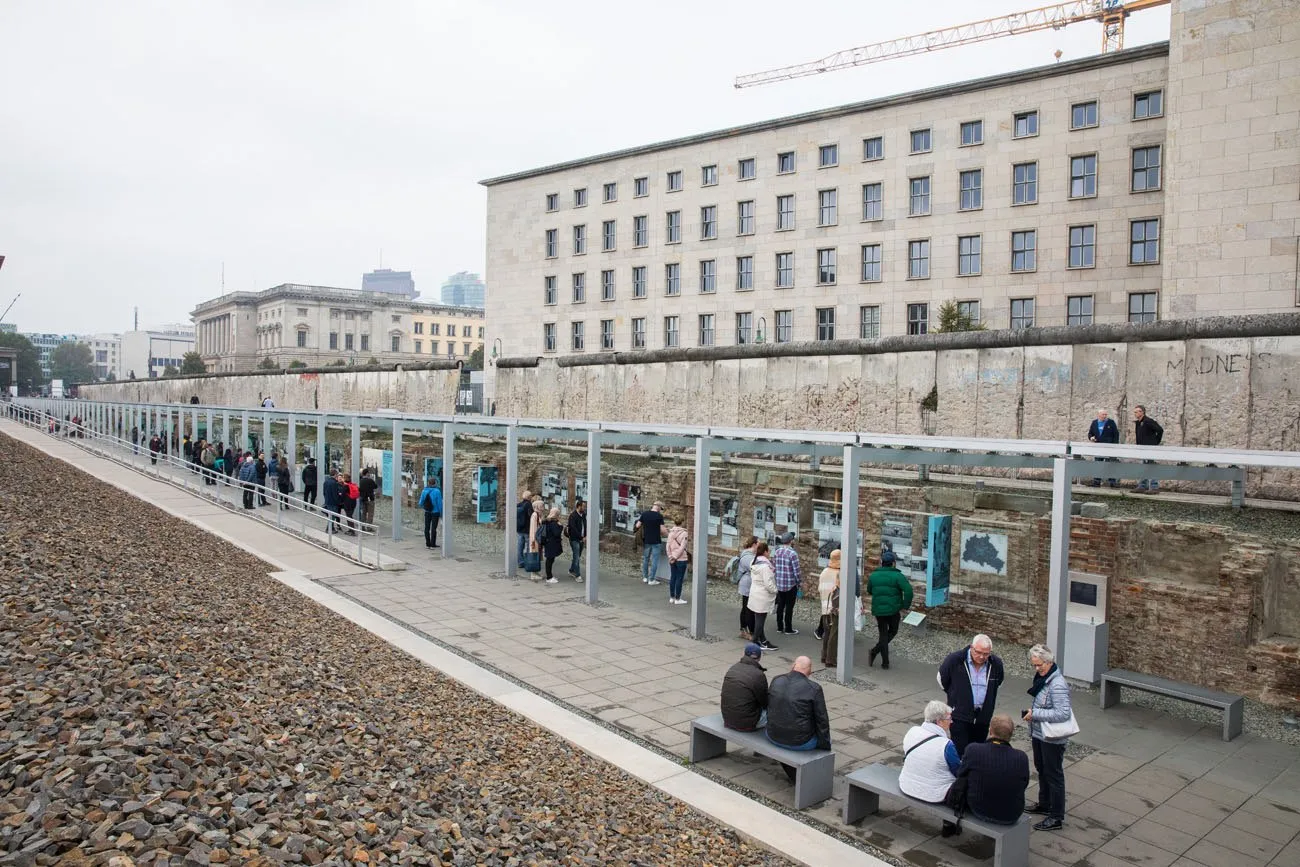
The Topography of Terror is another one of those must-see places in Berlin.
Location: near Potsdamer Platz
Cost: free
East Side Gallery
The East Side Gallery is a long stretch of the wall covered in graffiti. If you like street art, a visit here is worthwhile.
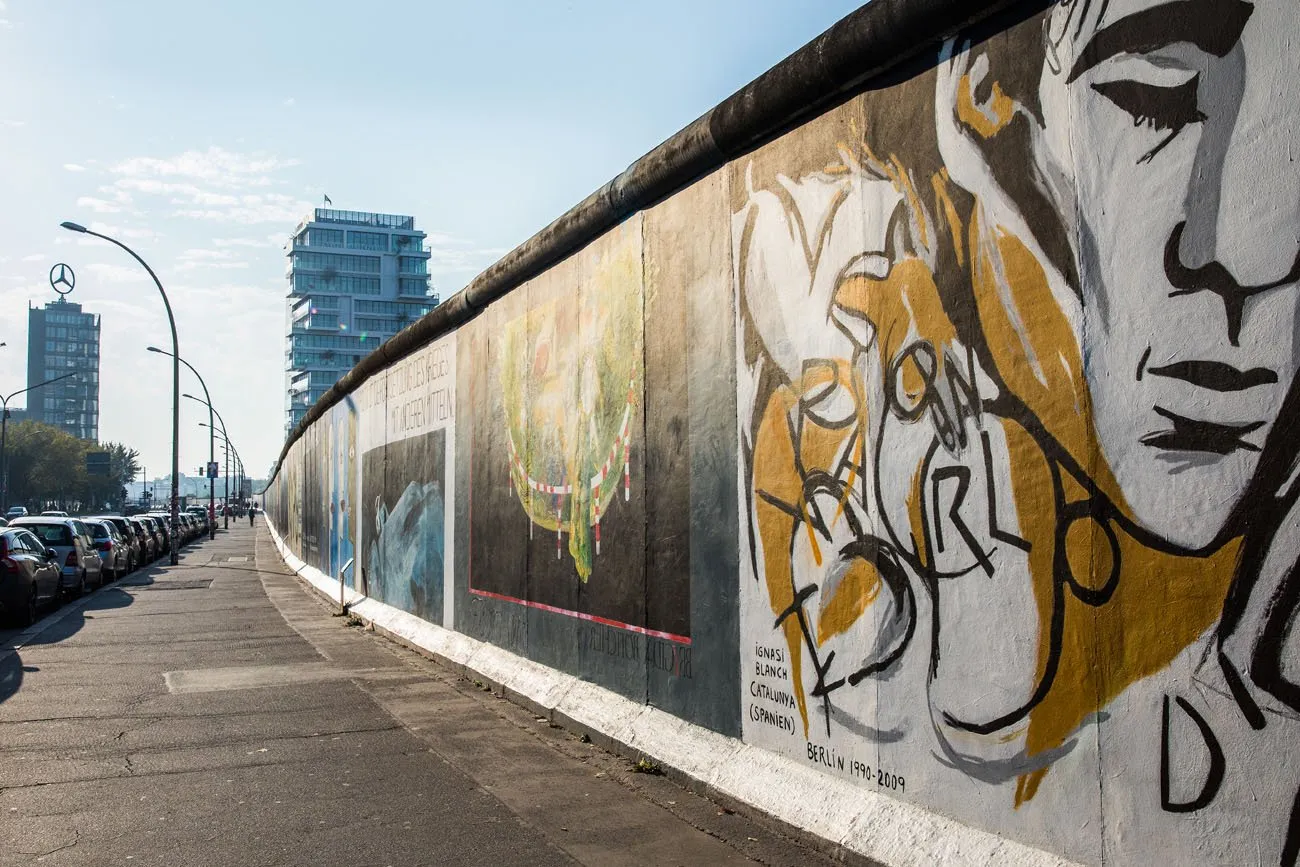
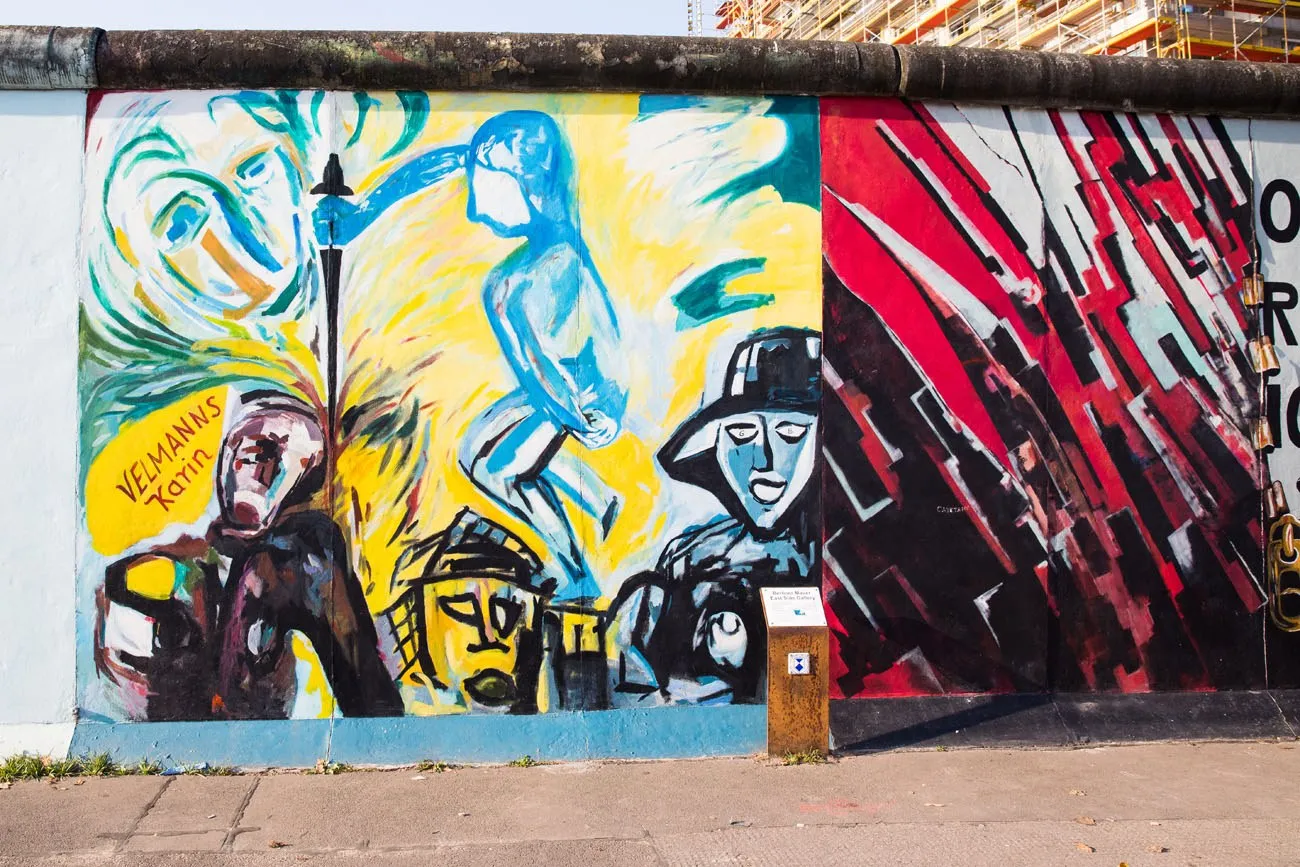
Location: East Berlin on the Spree River
Cost: free
Potsdamer Platz
There is also a very small piece of the wall on display in Potsdamer Platz.
2. The Brandenburg Gate
The Brandenburg Gate is the most recognizable landmark in Berlin. It is now a symbol of unity not only in Germany but also in Europe.
Today, the Brandenburg Gate serves as a backdrop for political events, concerts, and public gatherings. During our visit, the Brandenburg Gate was surrounded by fences and a temporary concert stage. I wanted to get just one gorgeous, clutter free photo of the Brandenburg Gate at nighttime but that was not going to happen for us, not during this visit.
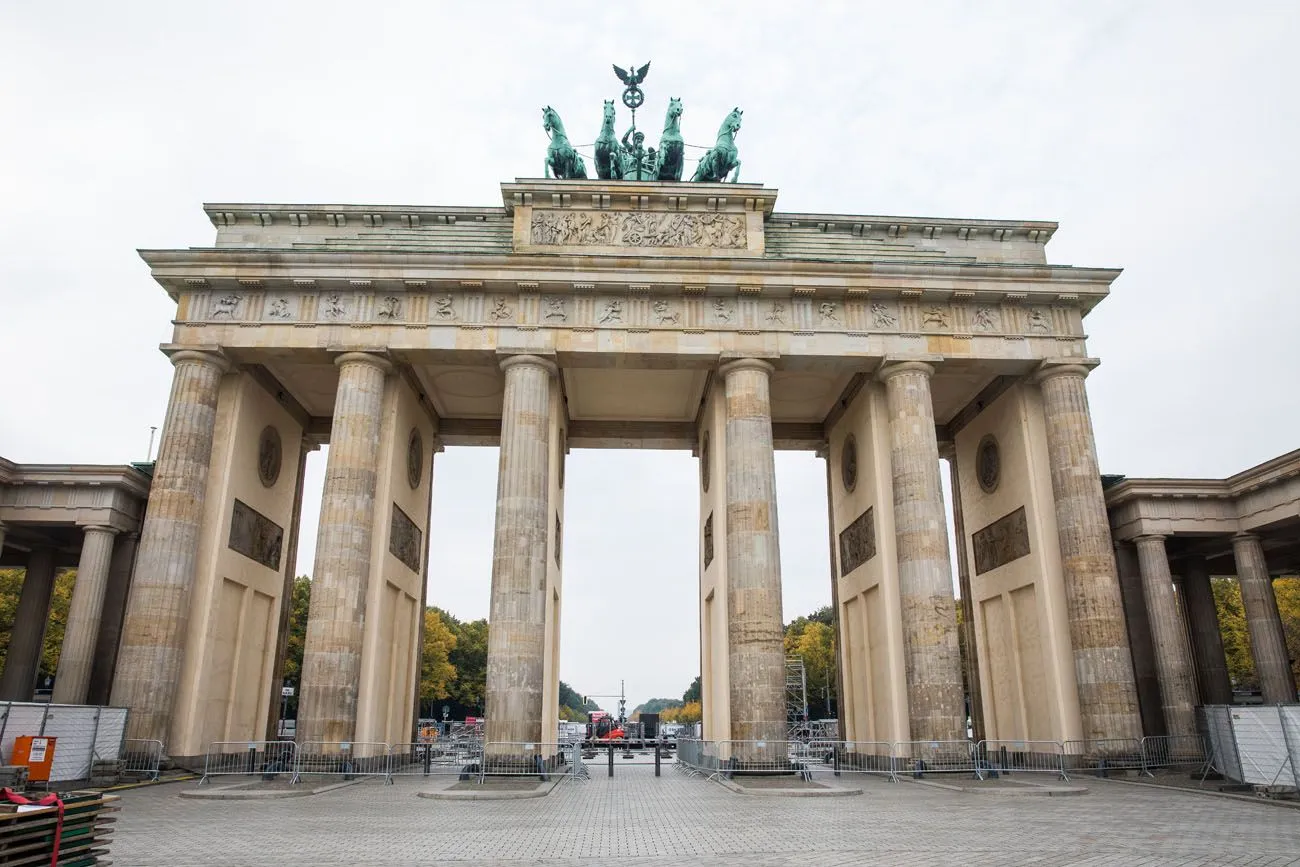
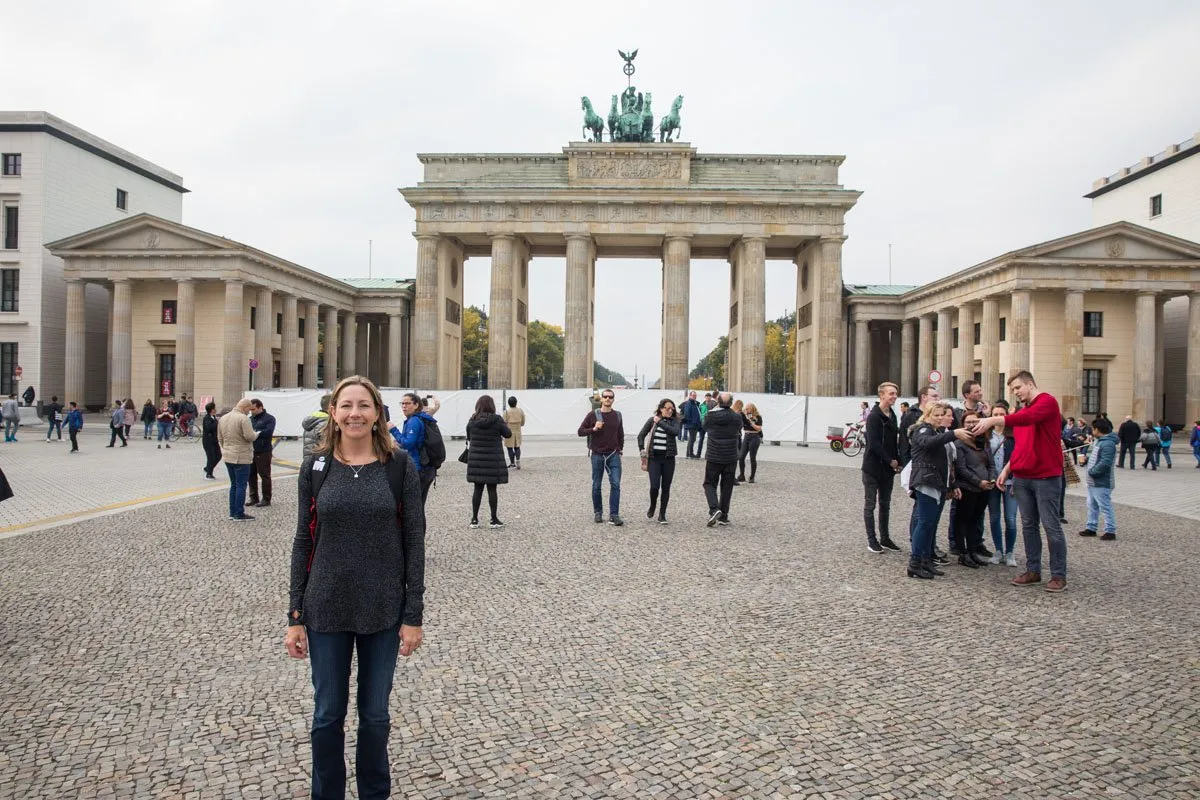
Location: near Potsdamer Platz
Cost: free
3. The Roof of the Reichstag Building
The Reichstag Building is the meeting place of the German parliament (Bundestag). On top of the building is a modern glass dome that has a 360° view of Berlin. From 8 am to midnight, you can visit the dome, look out over Berlin, and listen to the informative audio guide. Twilight is the best time to be here, to watch the sunset over the city and see the dome illuminated.
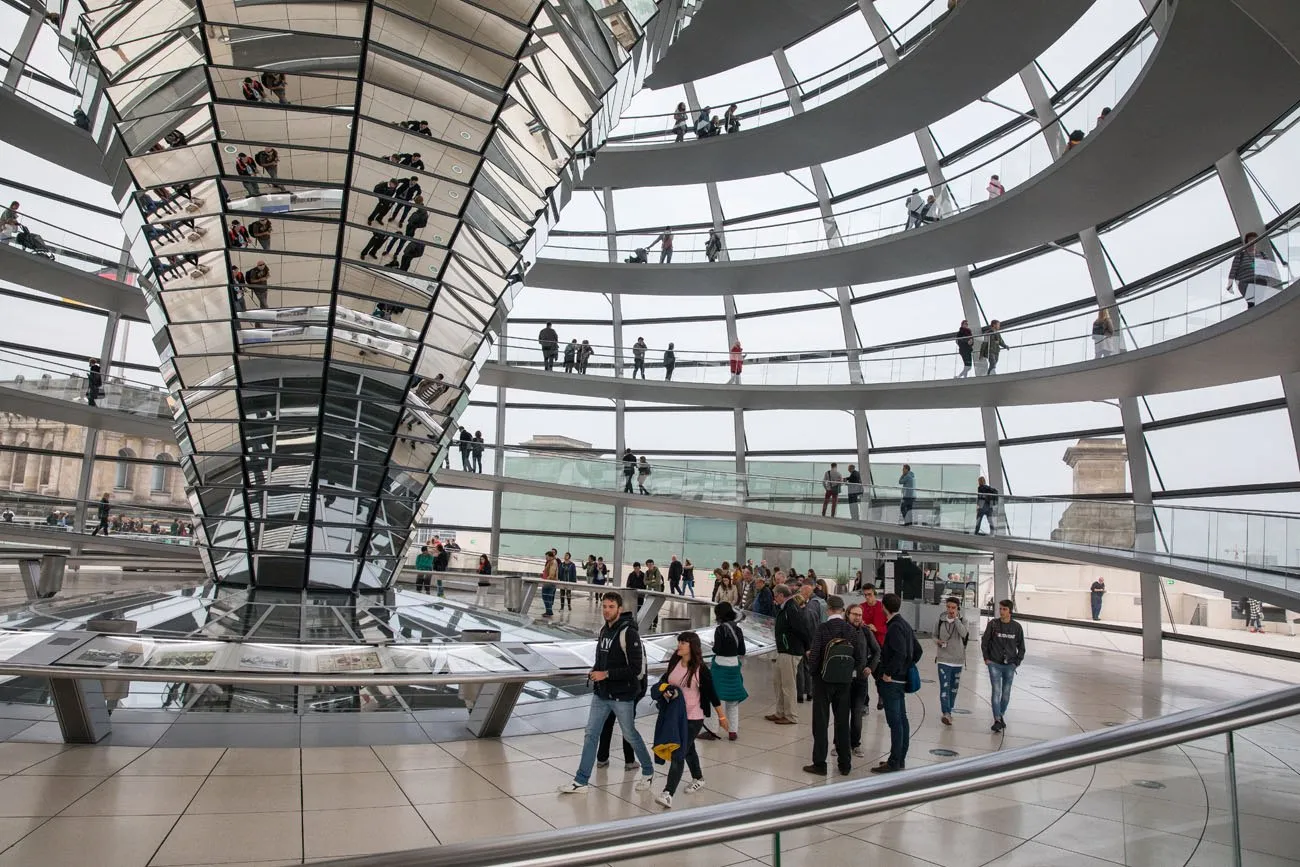
Tickets are free and to make sure you get a spot, make your reservation at least one day in advance (you can do so online).
Location: Near the Brandenburg Gate; U-Bahn Bundestag
Cost: free
4. The Holocaust Memorial
2,711 concrete blocks of various sizes make up this unusual but thought-provoking memorial to the Jews who were murdered in Europe. It’s like walking through an eerie maze constructed with gray, tomblike blocks.
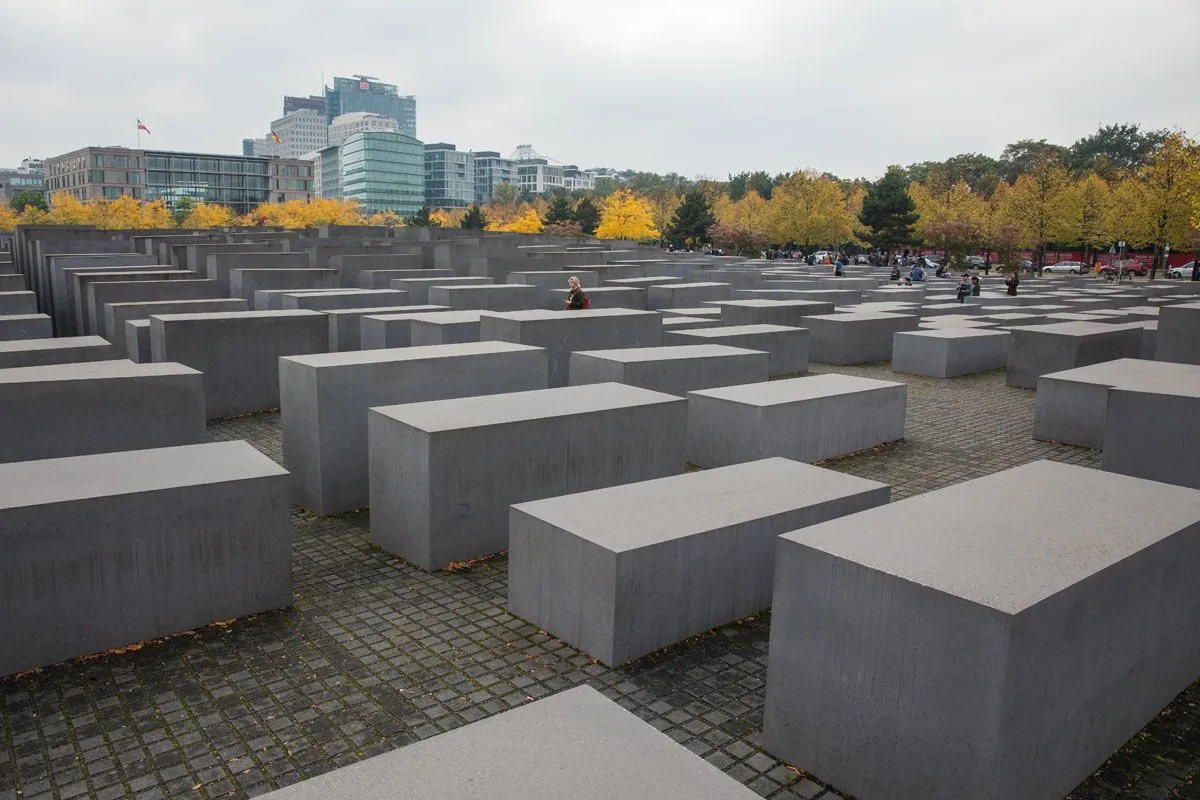
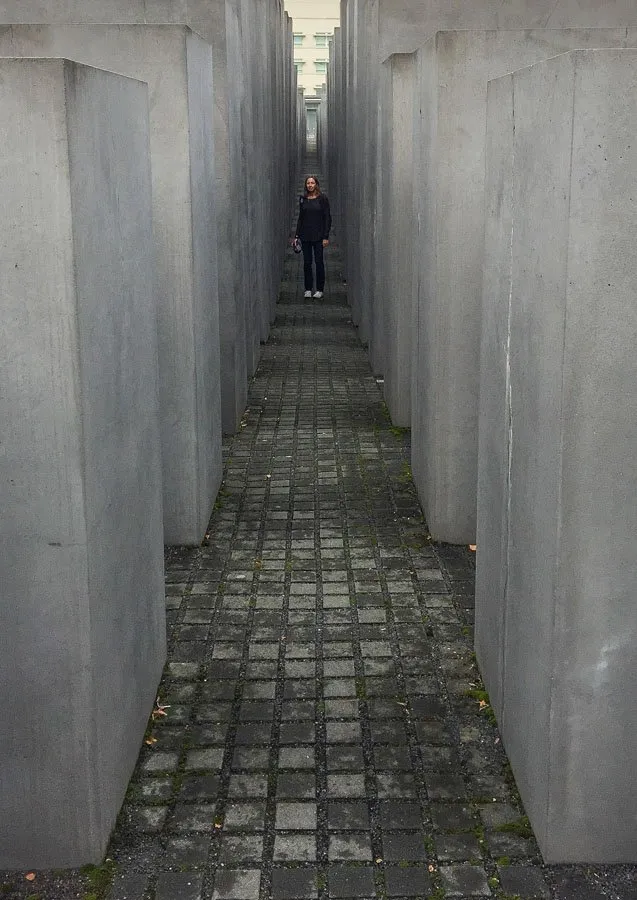
Location: next to the Brandenburg Gate
Cost: free
5. Potsdamer Platz
This is ultra-modern Berlin. Glass skyscrapers and a square filled with shops and restaurants can be found here. It’s hard to believe that this area was a barren, no-man’s land after WWII.
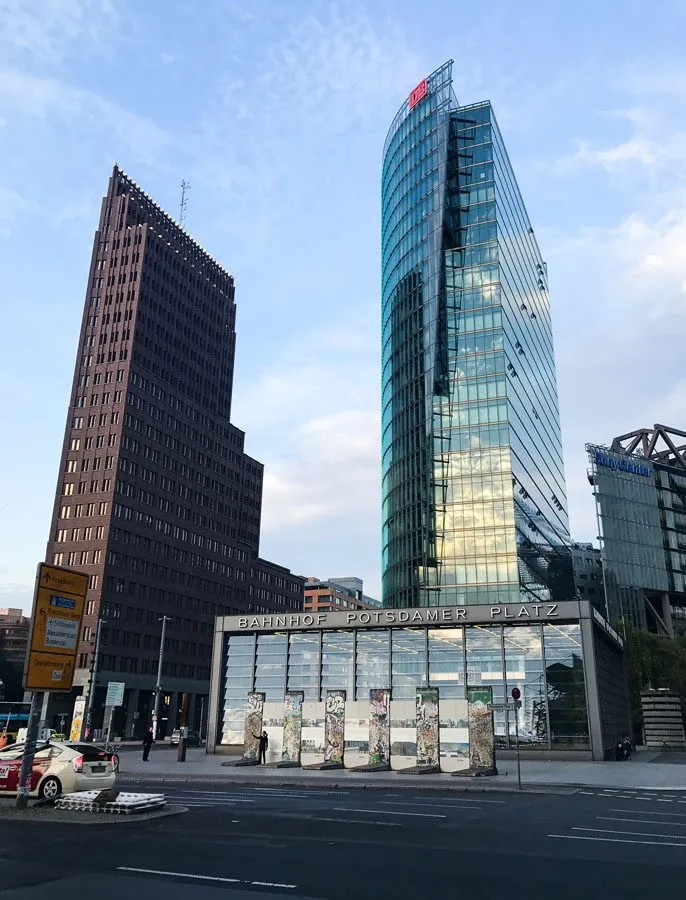
If you are using the metro to get around Berlin, Potsdamer Platz has a convenient location, as the Brandenburg Gate, Topography of Terror, and Holocaust Memorial are nearby.
6. Museum Island
Museum lovers, rejoice! Here is an entire island filled with world-class museums.
Altes Museum (Old Museum): art from ancient Greece and the Roman Empire
Alte Nationalgalerie: paintings and sculptures from the neoclassical period through the mid-19th century. It includes works by Monet, Renoir, and Manet.
Neues Museum: See the famous bust of Ancient Egyptian queen Nefertiti as well as other pieces from ancient Egypt.
Pergamonmuseum: This is Berlin’s most popular museum. The museum is named after the Pergamon Altar, but also includes artifacts from Iran, Egypt, Asia Minor, and the Caucasus. The north wing, including the Pergamon Altar, is closed for refurbishment until 2025.
Bode Museum: Contains art and sculptures from the medieval period through the 18th century.
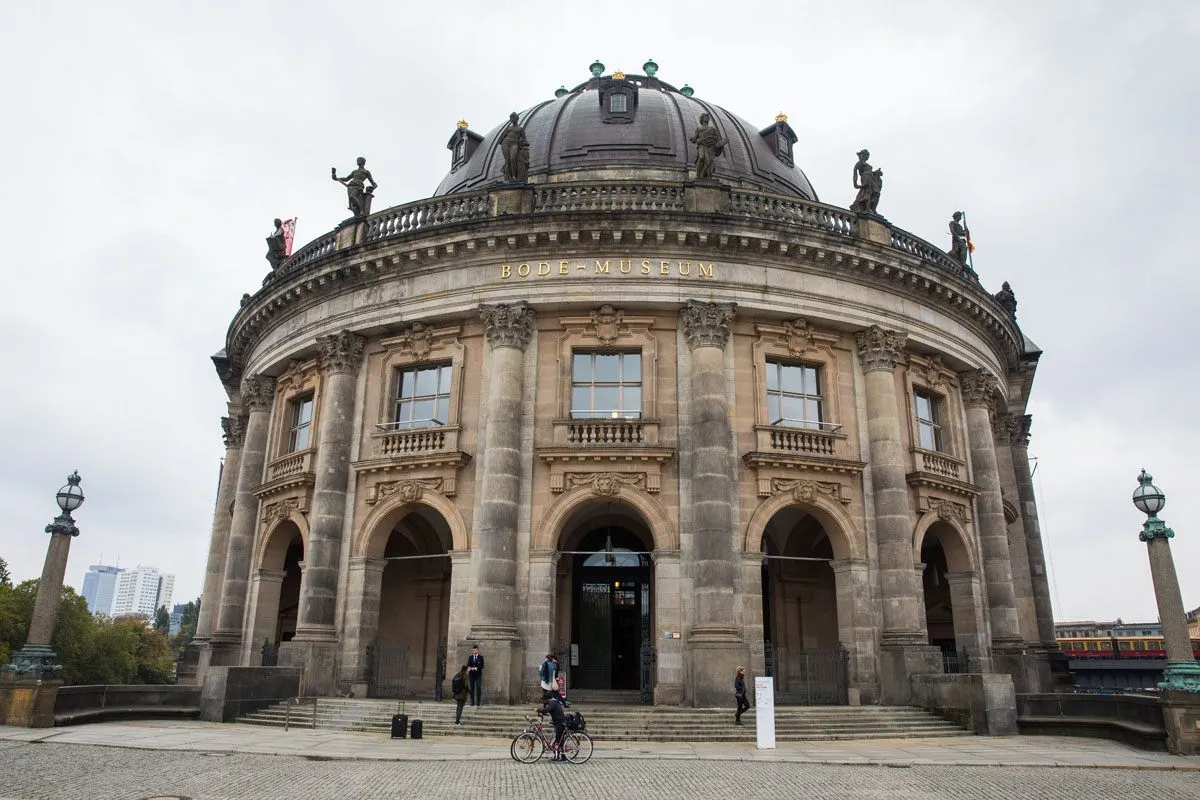
Tickets can be purchased individually for each museum or you can purchase a combination ticket for all of Museum Island. Learn more here.
7. Berlin Cathedral
Also located on Museum Island is the Berlin Cathedral. This massive church dominates the area. I recommend climbing the 270 steps to the top of the dome for a great view of Berlin.
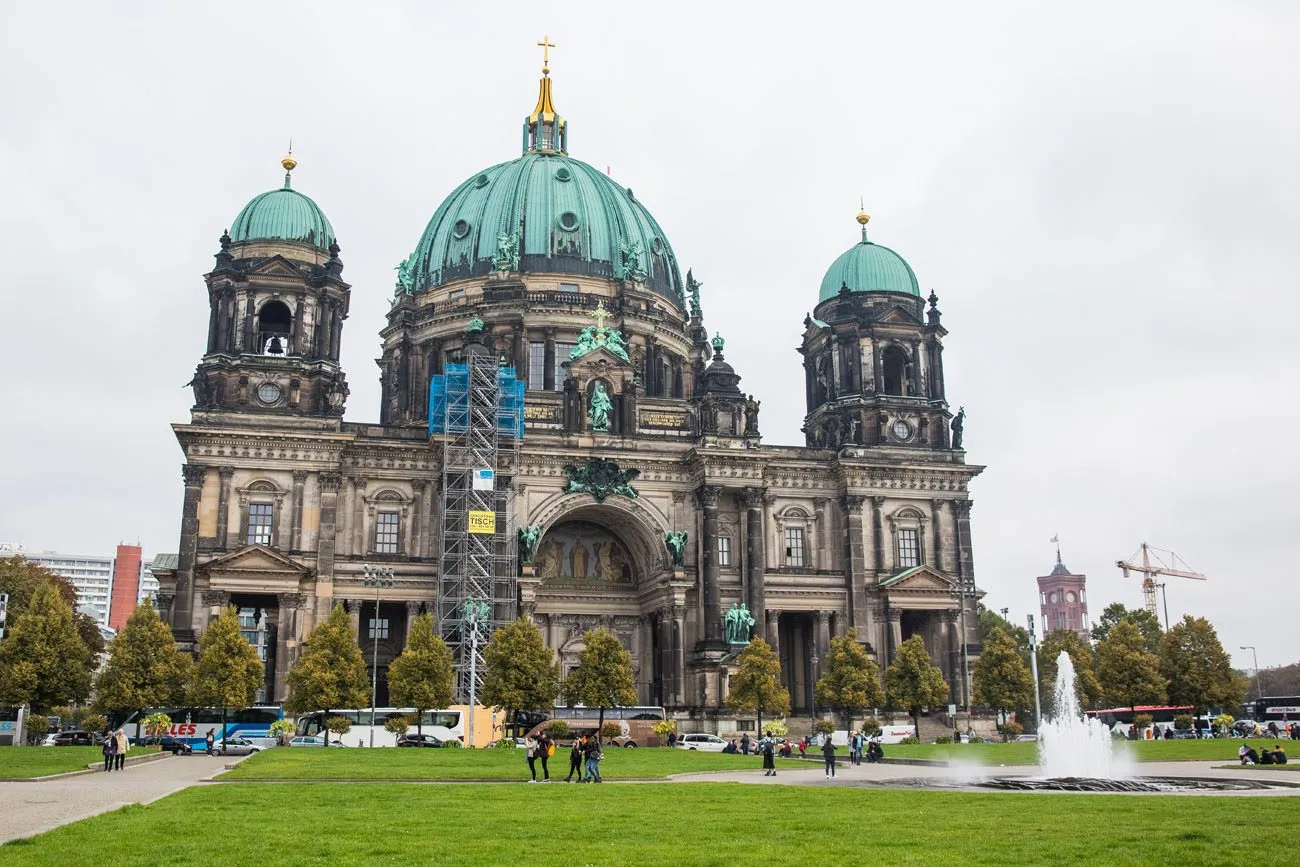
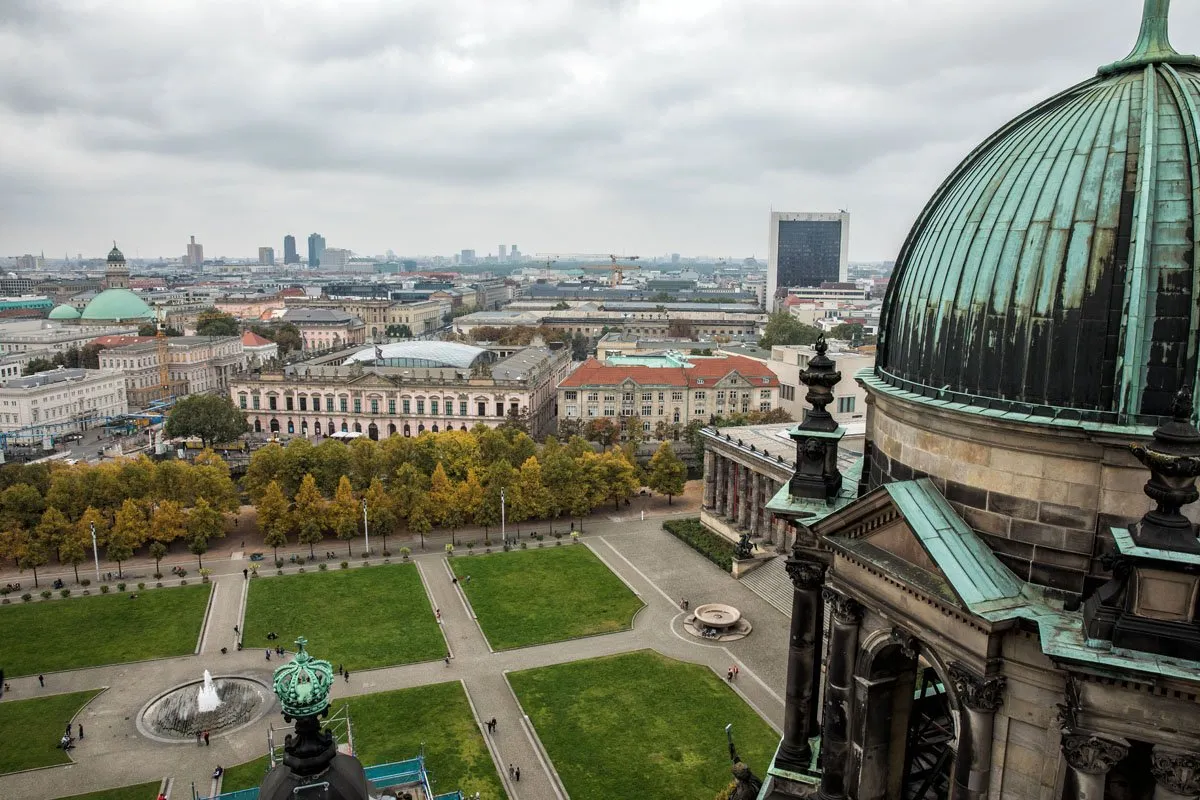
Location: Museum Island
Website: Get updated pricing on the official website.
8. Alexanderplatz
This large square is a busy spot. During our visit in September, this was the site of Berlin’s Oktoberfest. In December, this is also the place to find one of many of Berlin’s Christmas markets.
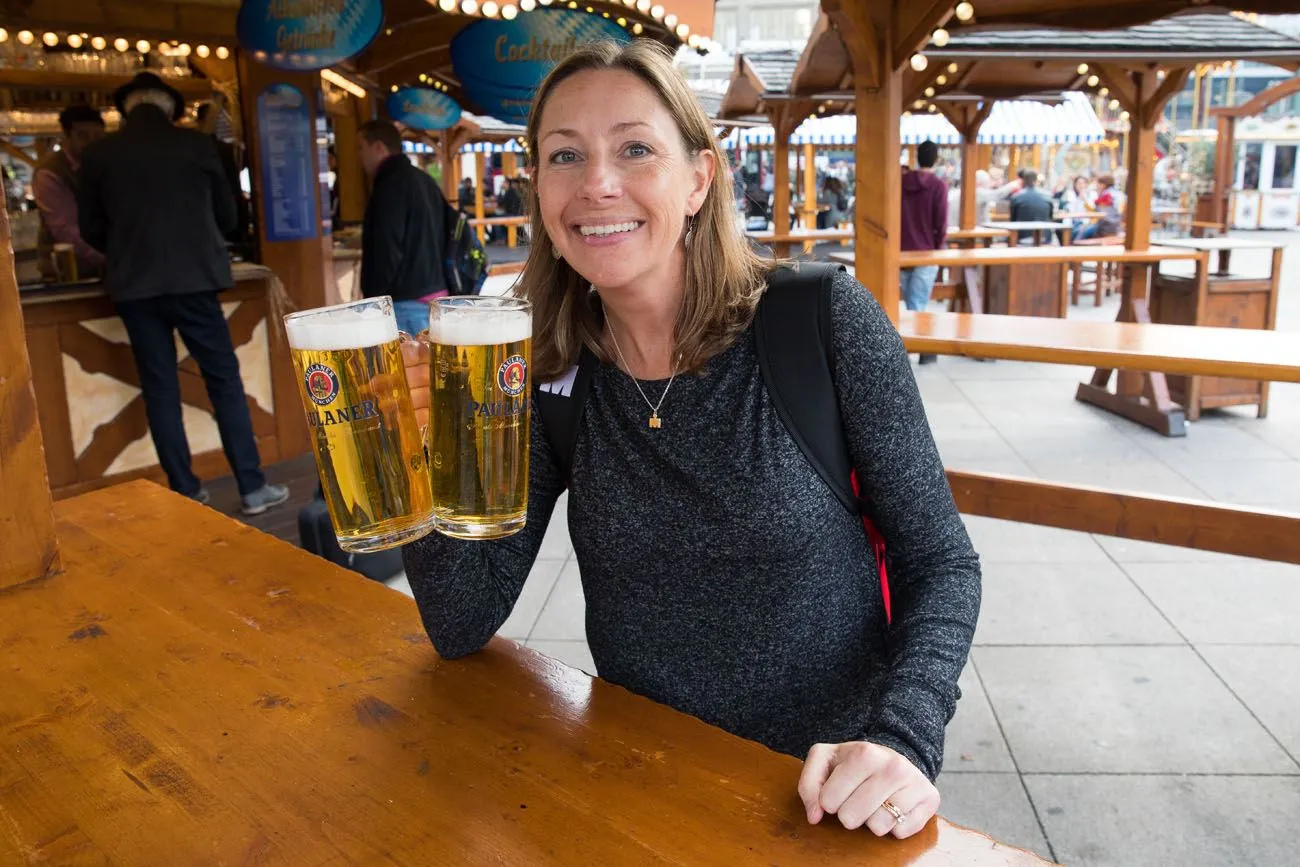
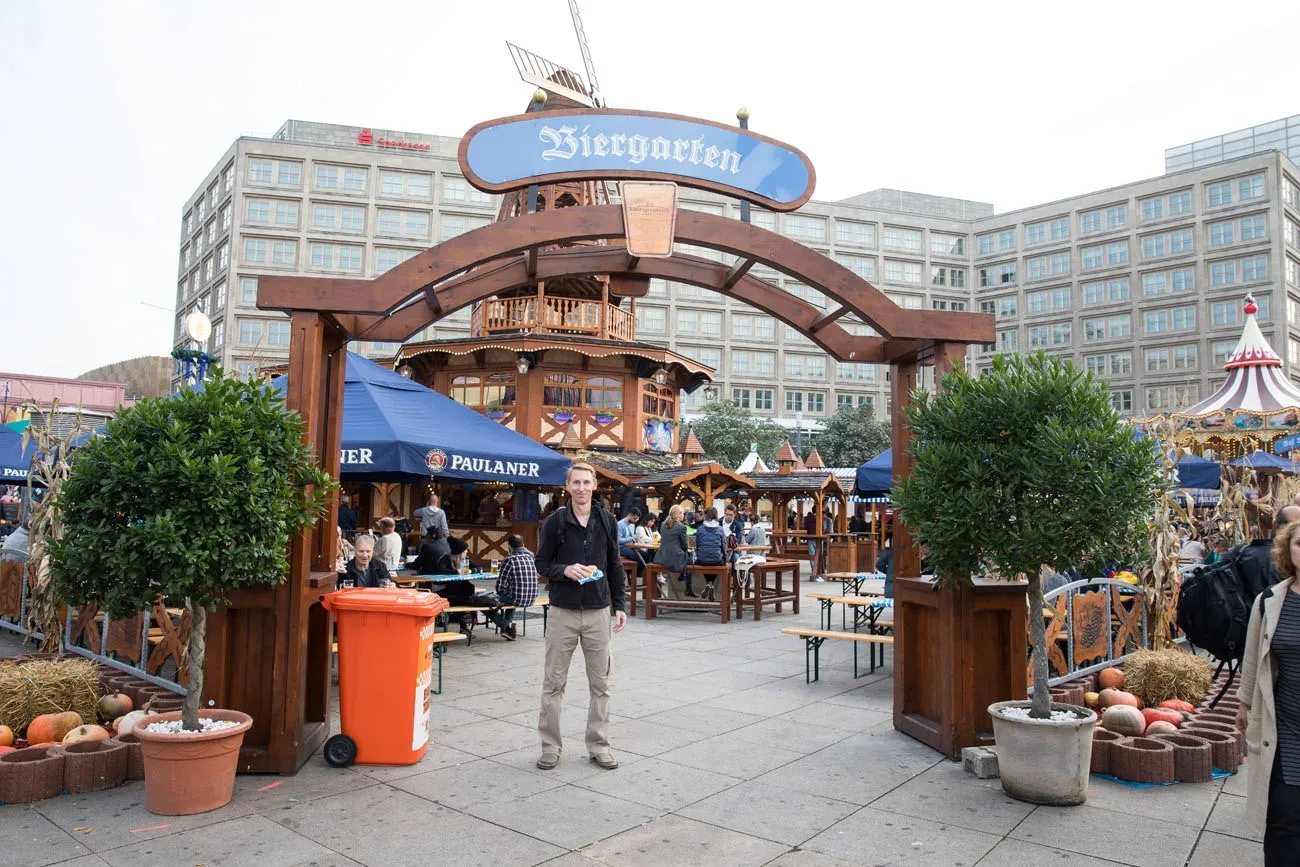
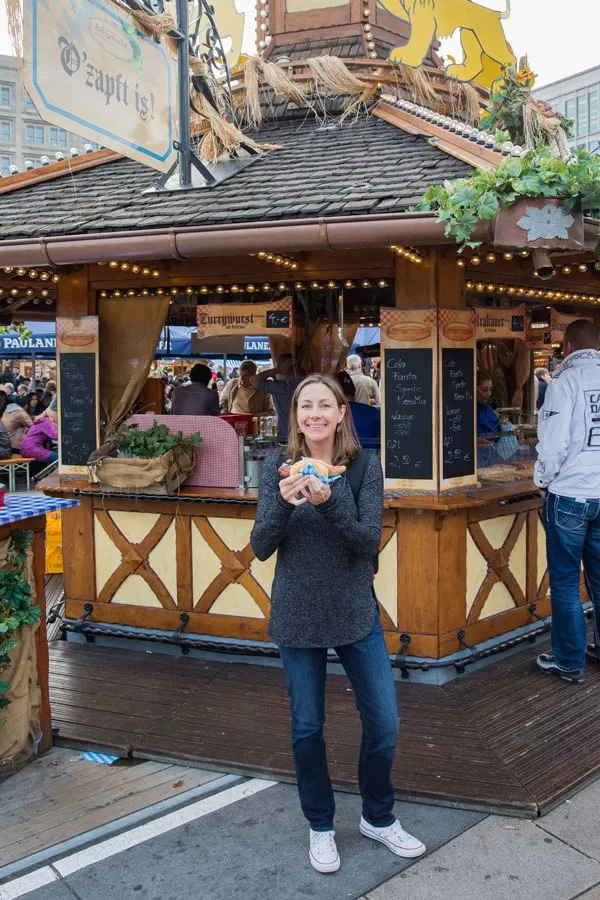
9. Berlin TV Tower (Fernsehturm)
Located in Alexanderplatz, the Berlin TV Tower gives you the highest view over Berlin. From the top, get 360° views over the city. There is also a bar and restaurant.
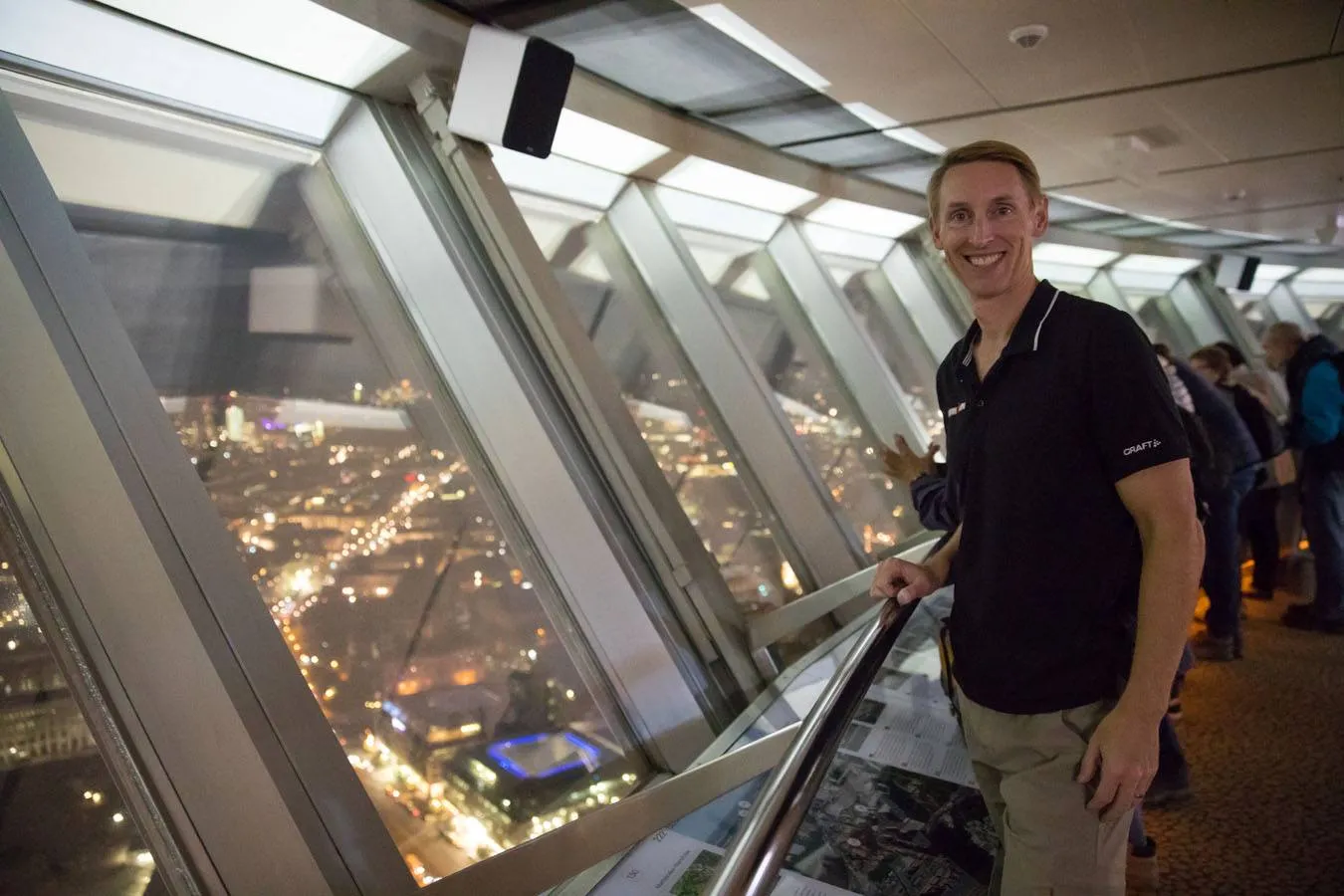
Location: Alexanderplatz
Website: Get updated pricing and hours on the official website
10. Olympiastadion Berlin
This stadium was originally built for the 1936 Summer Olympics. It is still used today, for sporting events and concerts. The Rolling Stones, U2, Michael Jackson, and AC/DC have all performed here.
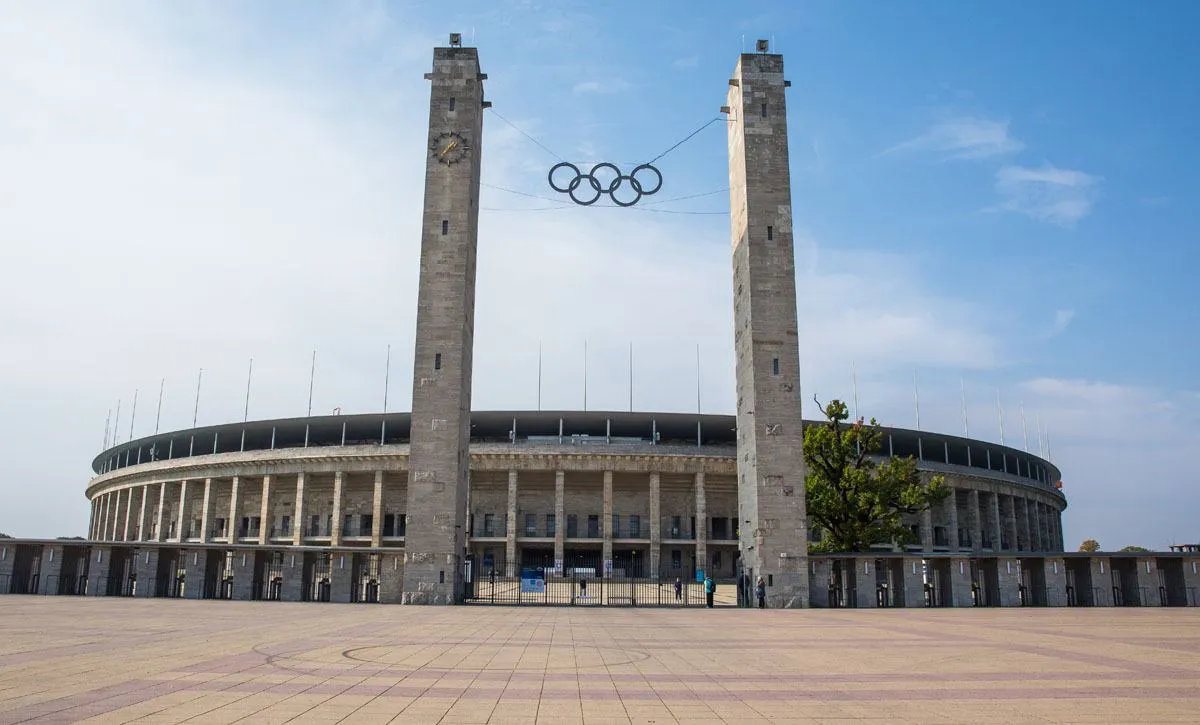
During the day, you can purchase tickets and take a self-tour of the stadium or take a guided tour.
Location: West Berlin, S-Bahn Olympiastadion station or U-Bahn Olympia-Stadion station
Website: Get updated hours and pricing on the official website.
11. Platform 17 Memorial (Gleis 17)
For a look into the dark side of Berlin history, visit Platform 17. This is a simple but powerful memorial to the thousands of Jews who were sent off to the concentration camps. It was this train station where Jews boarded the trains that would take them to the death camps.
This memorial is part of Grunewald Station. You can walk on the old, abandoned platform. On the platform are the dates, the number of people deported, and their final destination. The train tracks that mysteriously disappear into the woods is eerie and somber.
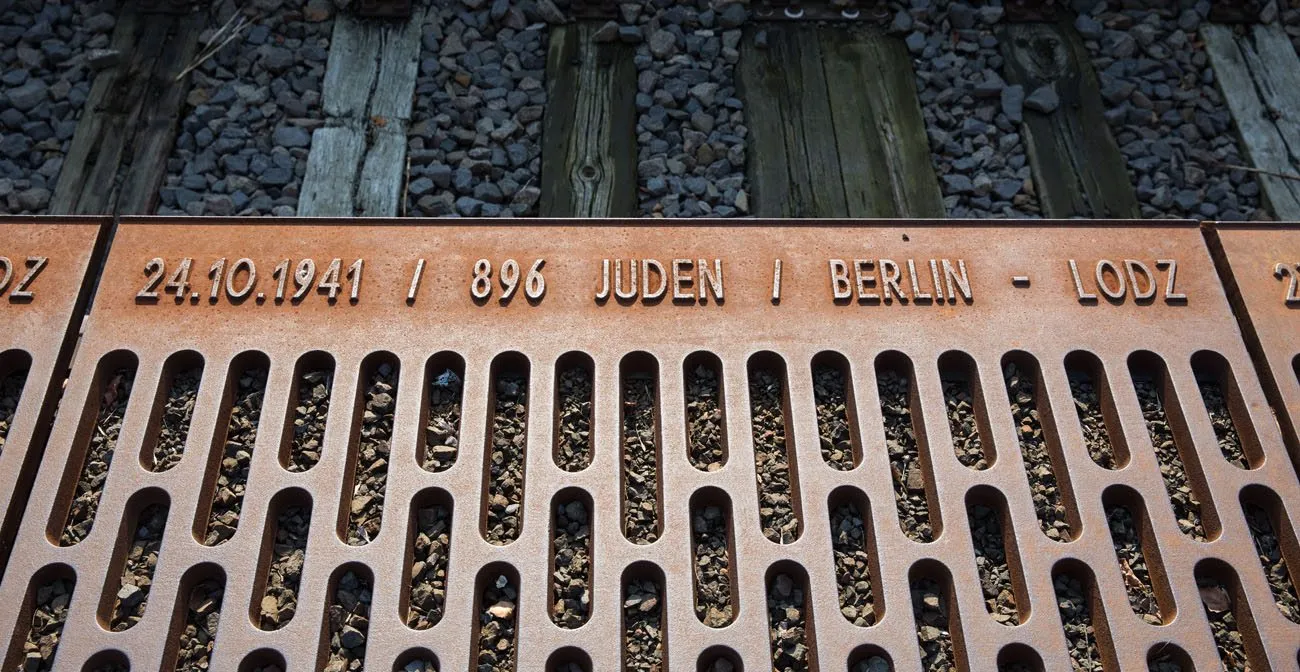
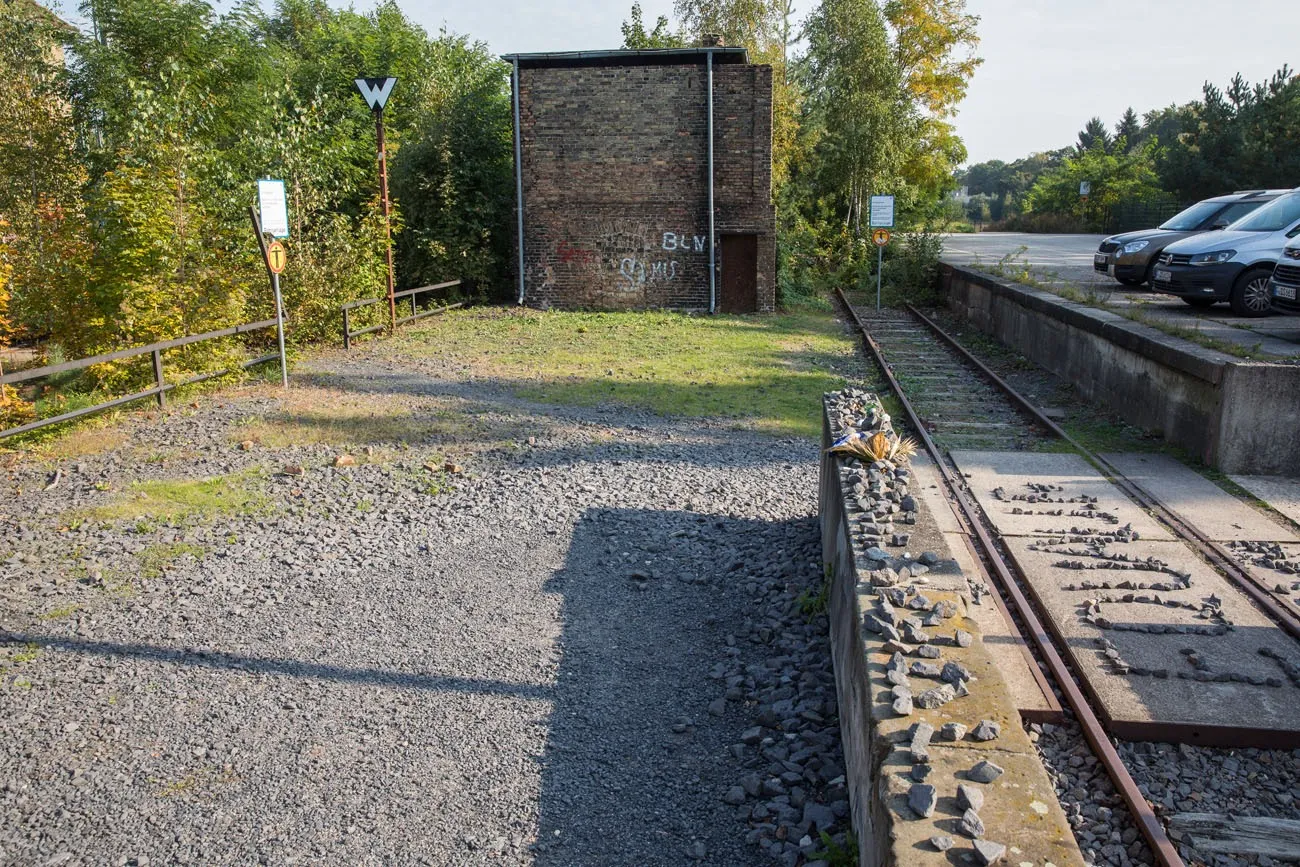
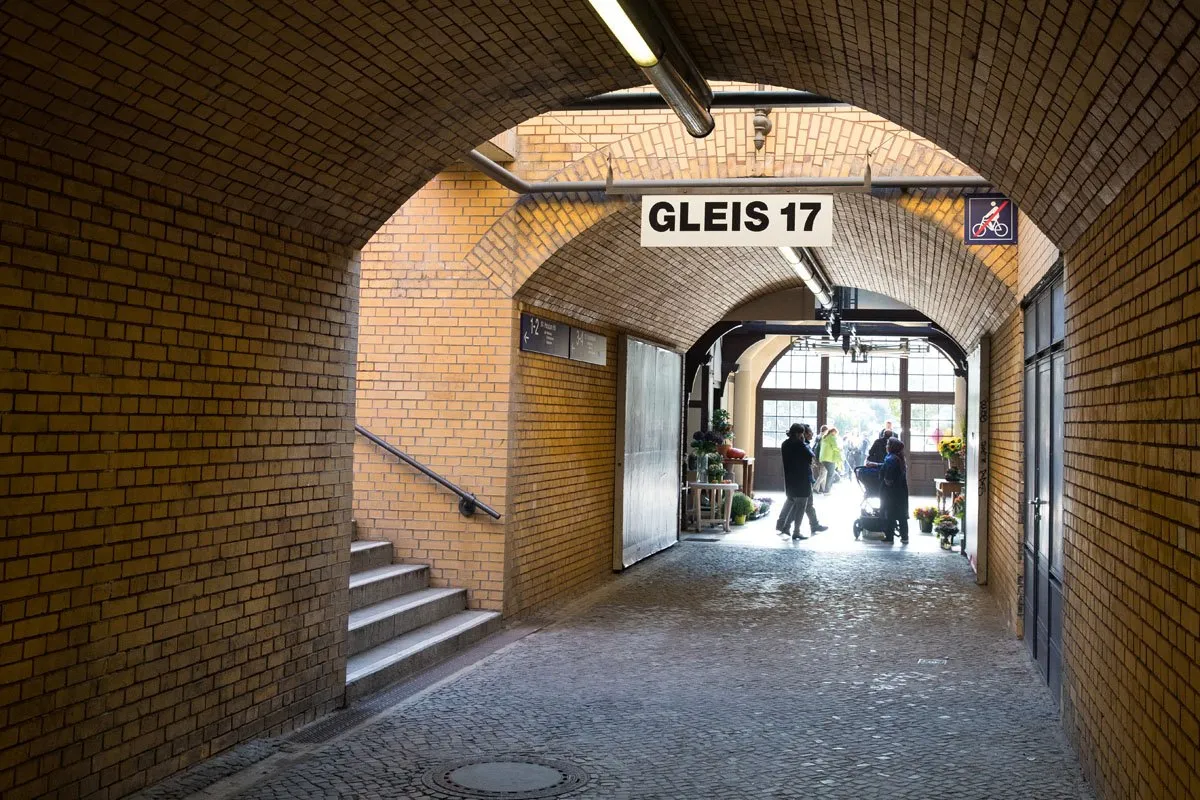
How to get here: From central Berlin, take the S7 to Grunewald Station. Walk downstairs and turn left, following the signs for Gleis 17. You will climb a set of stairs up onto the abandoned platform. Walk straight, towards the end of the platform. There is a small memorial plaque at the very end of the platform, near the abandoned railroad tracks.
Cost: free
12. Teufelsberg, Berlin’s Weirdest Spot?
If you want to visit one of Berlin’s strangest spots, put Teufelsberg on your list. Teufelsberg is an abandoned listening station used during the Cold War that is now covered in graffiti.
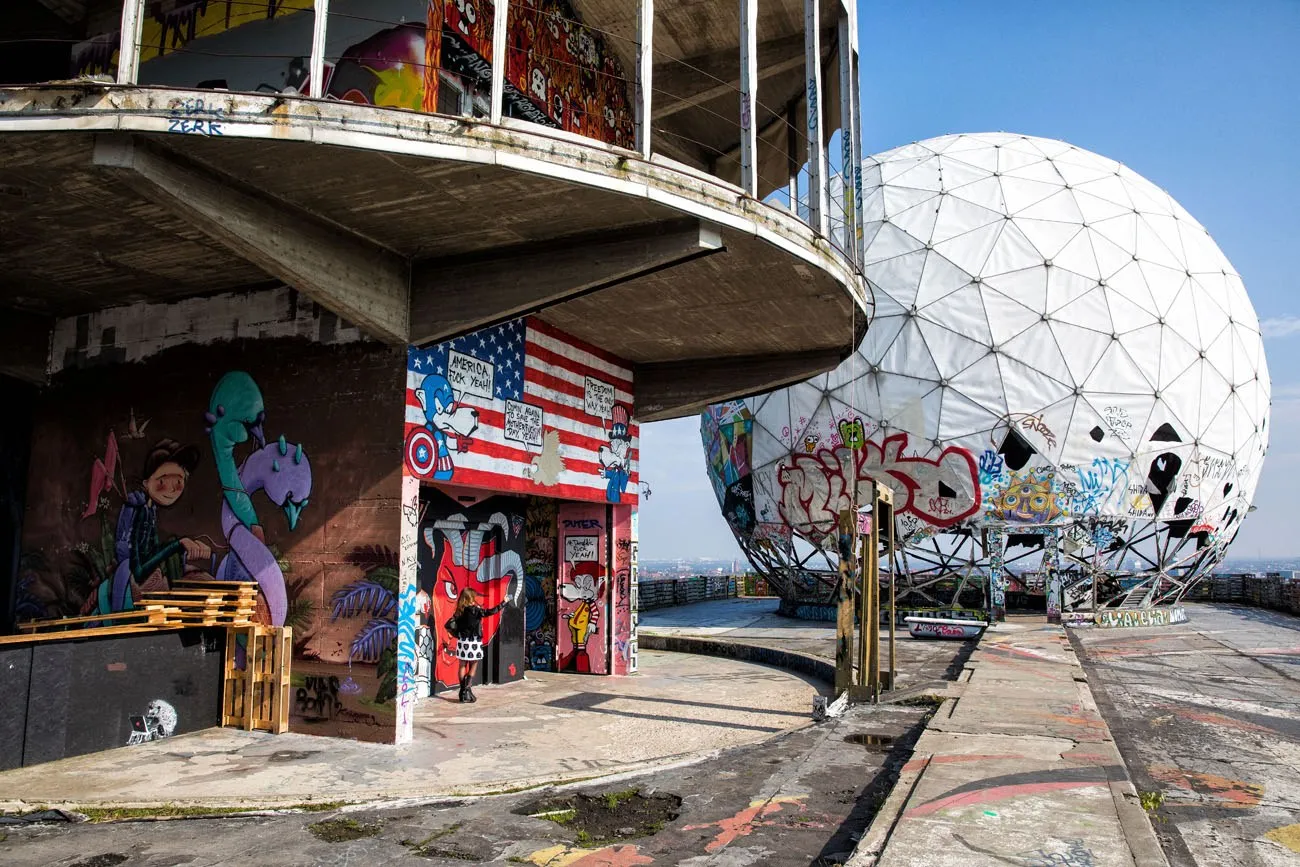
I found it to be a surprisingly interesting and enjoyable visit. In fact, it was one of my favorite spots in Berlin.
However, it’s out of the way and hard to get to, so I would only recommend a visit here if you have several days to spend in Berlin.
Read more about how to get here and what to expect on our post about Teufelsberg.
Location: West Berlin, located between Grunewald Station and the Olympiastadion
13. Flughafen Tempelhof
For more weird, abandoned Berlin, consider a visit to this old airport. Until 2008, Tempelhof was one of Berlin’s operating airports. The Tempelhof building is one of the largest buildings in the world. This was also the site of the Berlin airlift in 1948 and 1949.
Now, this giant outdoor space operates as a public park. Tours of the main building are offered several days a week. Click here for full details.
Location: south Berlin
14. Jewish Museum
This is not your normal museum. The architecture and design of the first exhibits are meant to unbalance you, to make you feel disconcerted. The floors are sloping, the walls are slanted, and everything is stark and industrial. Walking through these hallways and looking at these first exhibits was the highlight of the visit for me.
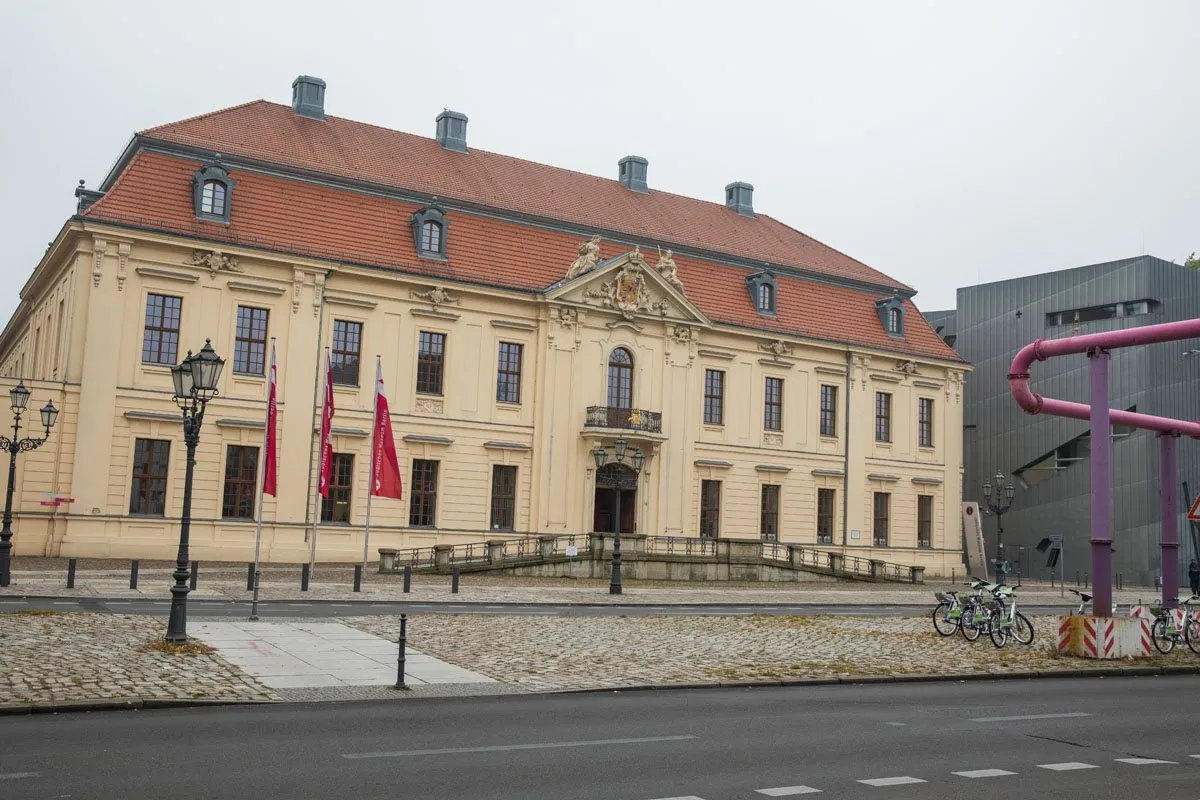
After being unbalanced, you will head into a more traditional museum, with artifacts and information about Jewish history and culture.
Location: U6 Kochstraße Station, U1 and U6 Hallesches Tor
Website: Get updated pricing and hours on the official website.
15. Checkpoint Charlie
Checkpoint Charlie was the best-known Berlin Wall crossing point during the Cold War. Now, it is a very touristy place to visit. If you want to see what all of the fuss is about, it’s worth a quick look, but skip the Checkpoint Charlie Museum (your time is better spent at the nearby Topography of Terror Museum).
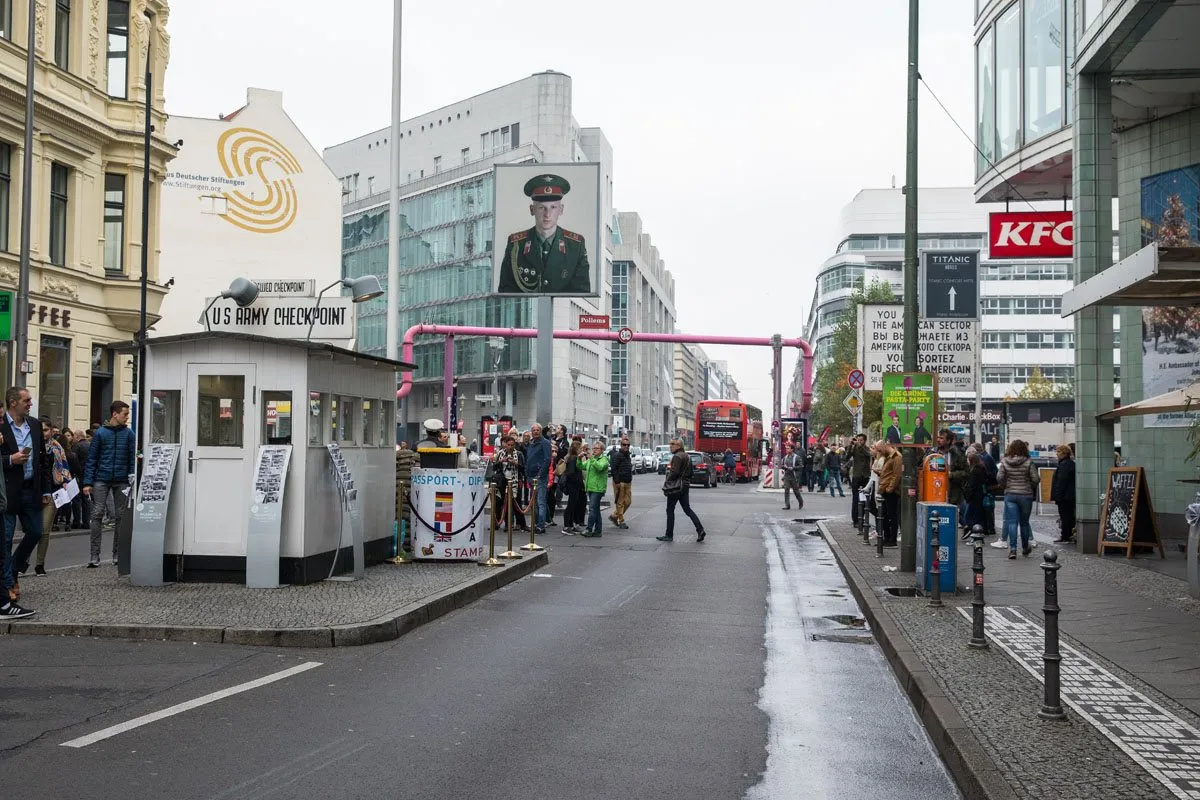
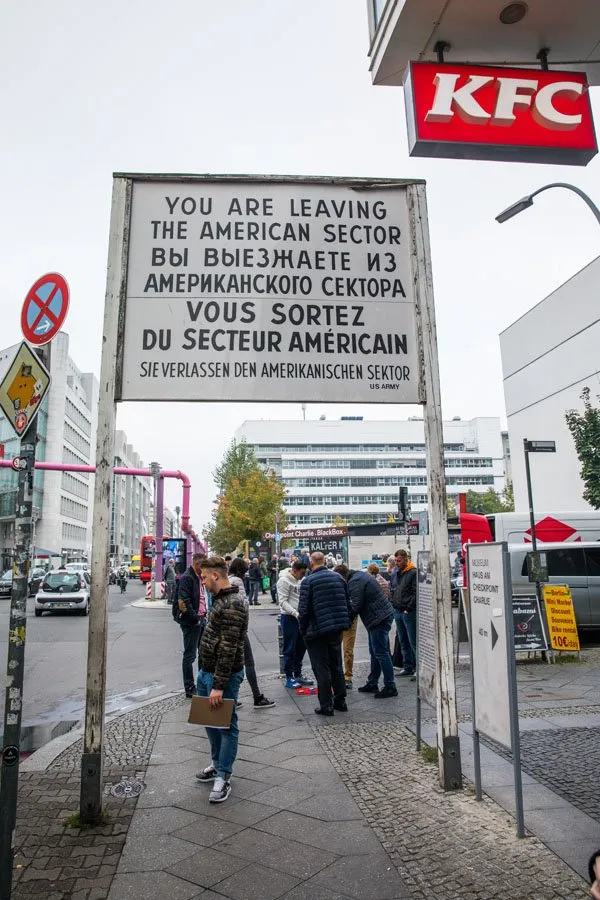
Cross the street to “The Wall” to see a panoramic view of the Berlin Wall in the 1980’s.
Location: U6 Kochstrasse Station
Cost: Free
16. Try Currywurst
Currywurst stands are found all over Berlin. It makes a quick snack or small meal, the perfect fuel for a day of sightseeing around town.
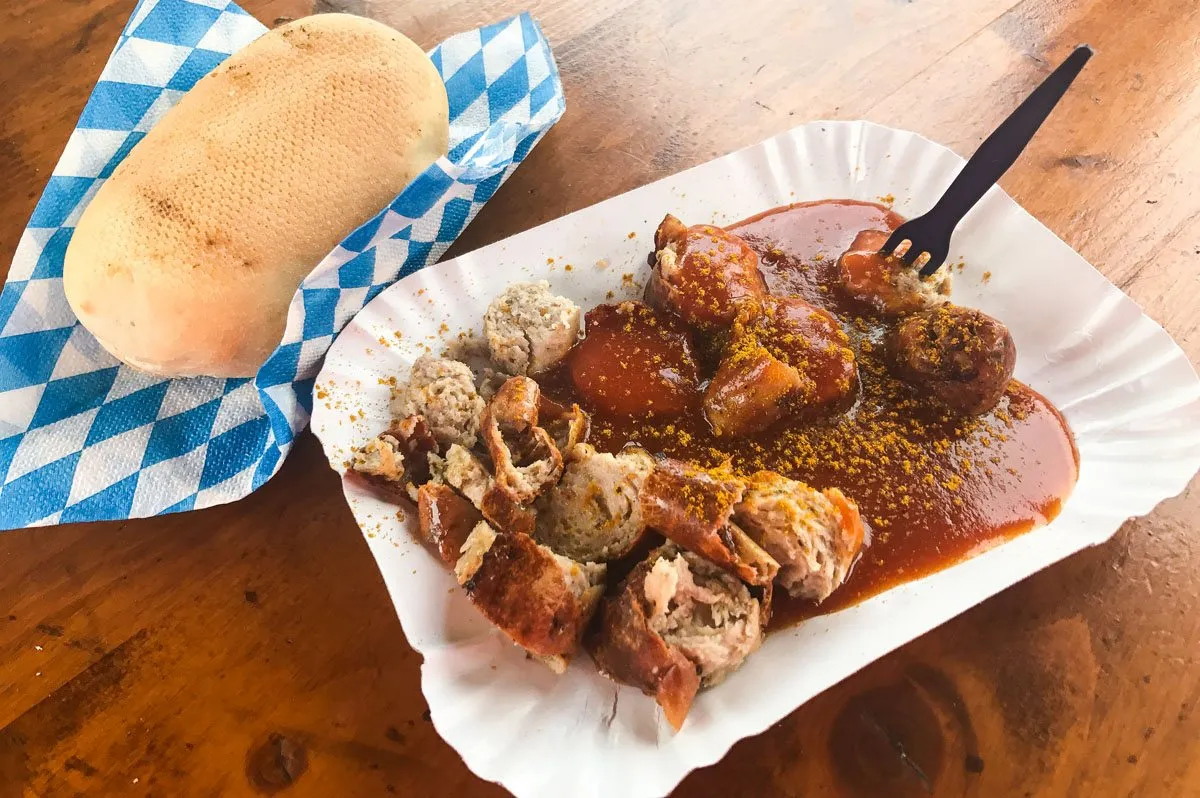
What is Currywurst? Currywurst is fried pork sausage cut into slices and served with curry ketchup.
17. Die Hackeschen Hofe
This collection of nine courtyards is used for shopping and dining. This is one of Berlin’s most popular spots for nightlife.
Location: S-Bahn Hackescher Markt
18. Gendarmenmarkt
Labeled as the most beautiful square in Berlin, this spot is home to a concert hall (the Konzerthaus) and the Französischer Dom. The dome of this cathedral has an outdoor terrace with 360° views over Berlin. Open-air concerts are held here as well as a Christmas market in December.
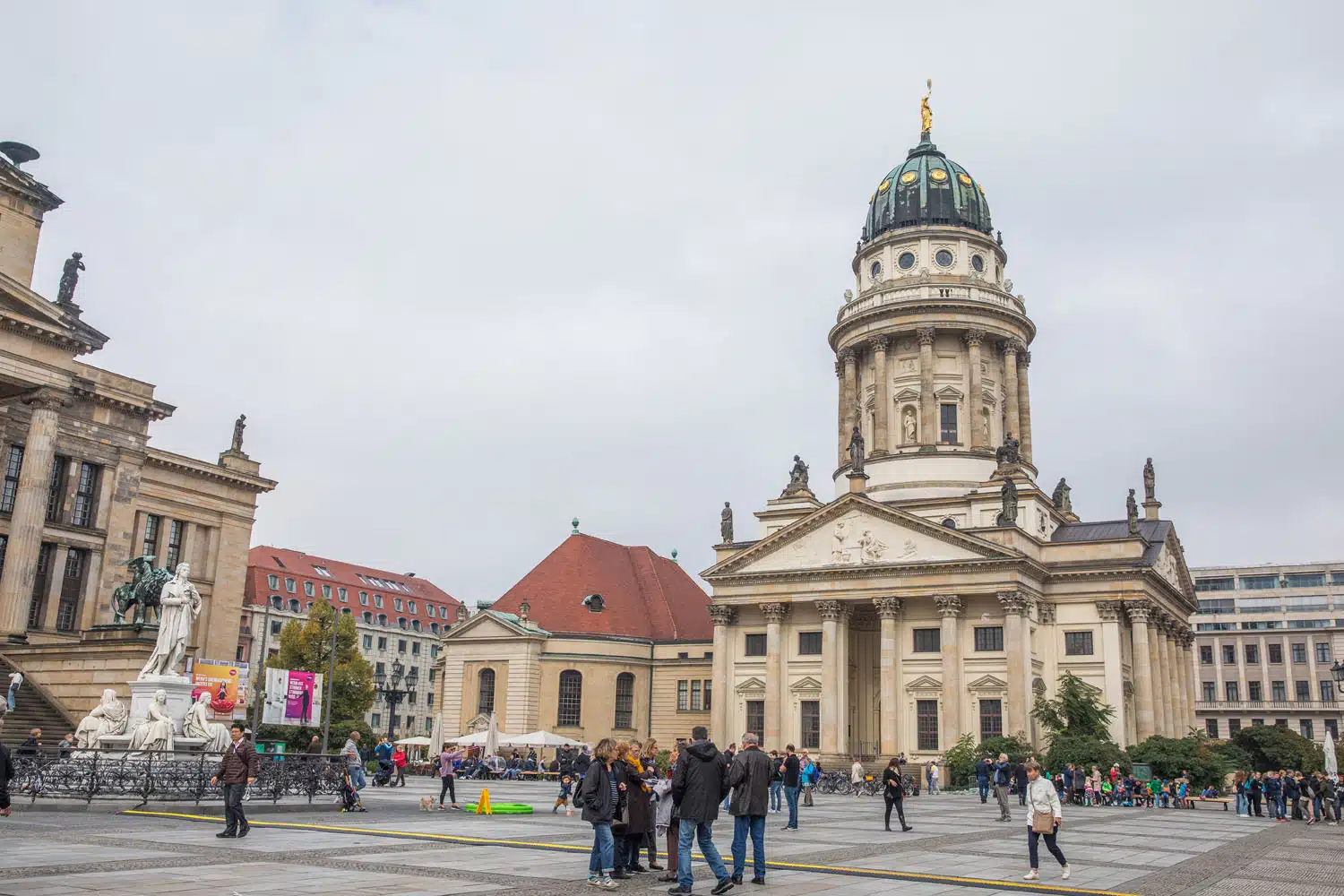
Französischer Dom
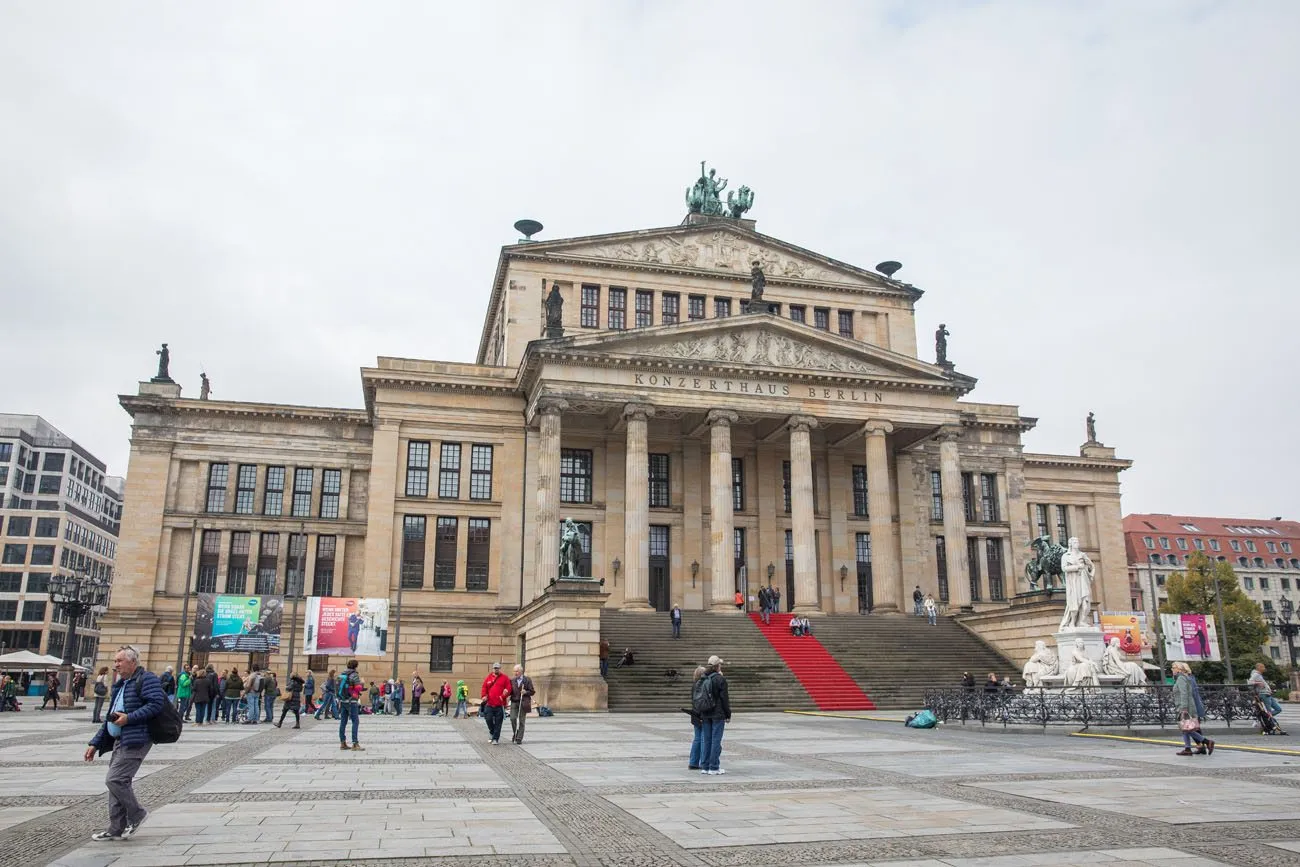
Location: central Berlin, U2 Stadmitte, U6 Franzosische Strasse,
Cost: free
19. Charlottenburg Palace
This is a summer palace built for Sophie Charlotte (the first Queen consort to Prussia) featuring baroque architecture. It was modeled after Versailles in France. For those who have been to Vienna, to us it looked a lot like Schonbrunn Palace (the summer residence of the Hapsburgs).
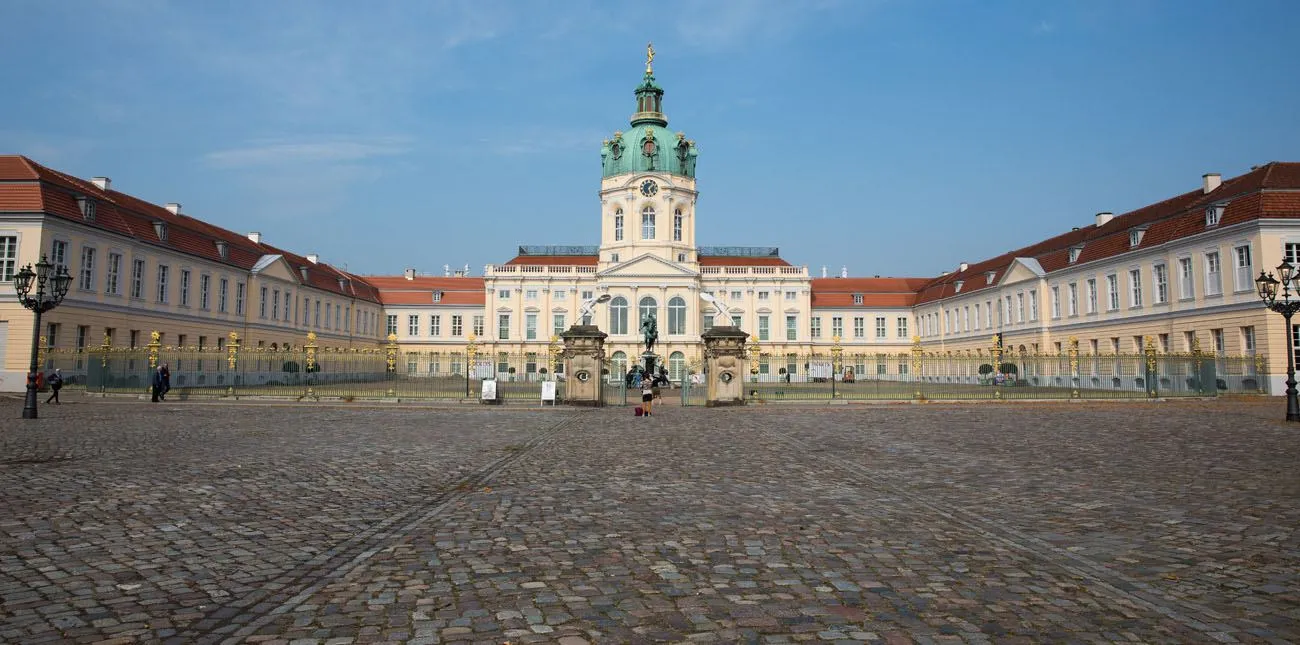
Location: Charlottenburg, S-Bahn Westend, U2 Sophie-Charlotte-Platz, U7 Richard-Wagner-Platz
Website: Get pricing and hours here
20. Kaufhaus des Westens (KaDeWe)
KaDeWe is Germany’s best-known department store. It is a huge, hulking, grimy building in downtown Berlin. Normally, we steer clear of shopping malls. But I am so glad we visited this one.
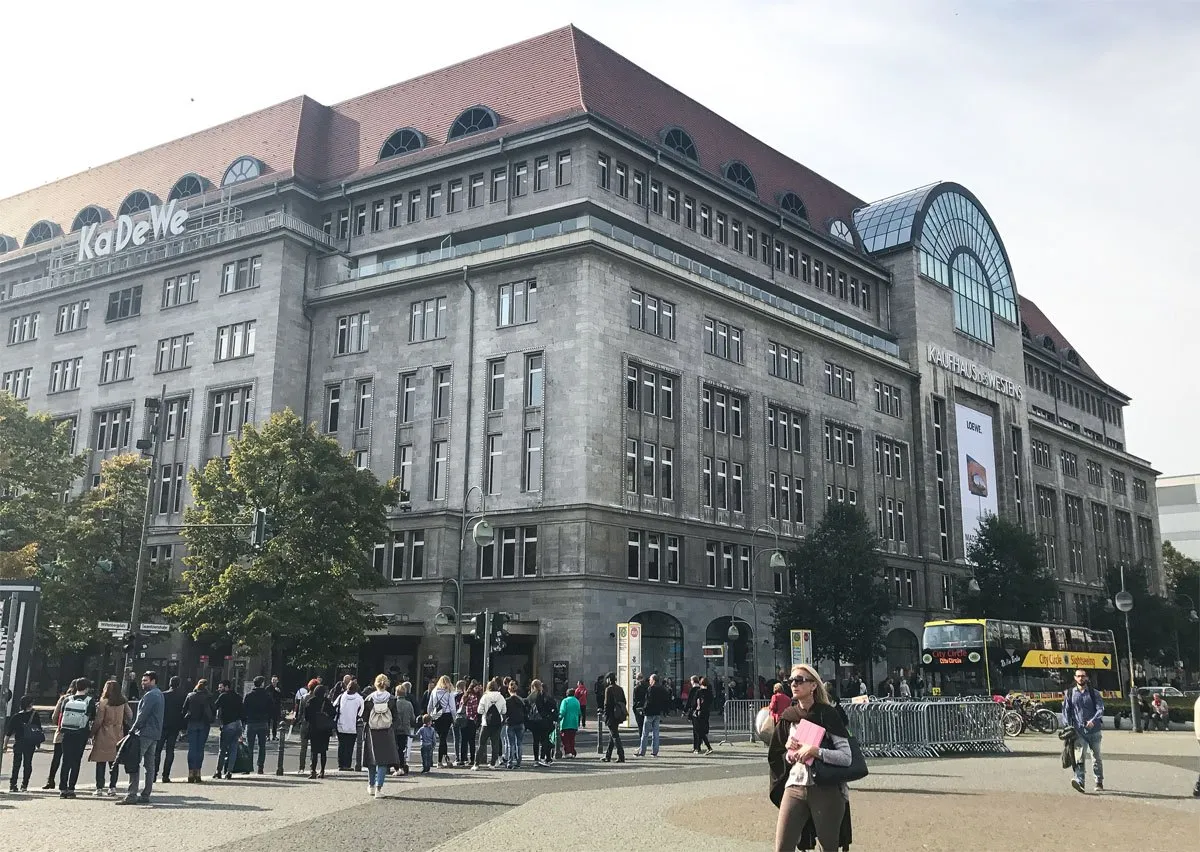
KaDeWe is seven floors of high-end merchandise and gourmet food. Cartier, Gucci, Tiffany & Co., Fendi, and many more luxury brands can be found here. I even saw a ultra-modern fusball table on sale for the budget price of €45,000!!
If you want to skip to the best part, take the series of escalators to the 6th floor. This is a gourmet food mecca. There are many small restaurants serving a wide variety of food…there is an oyster bar, a sushi restaurant, a small restaurant serving only bouillabaisse, a restaurant specializing in potatoes, pizza, seafood, and so much more. I ate at the Silver Pagoda and it was fantastic!! Tim ate Italian and his was just as good.
After dinner, we strolled around the international gourmet markets. Never have I seen so much chocolate for sale in all my life. And there were markets where you could do wine tastings, vodka tastings, whiskey tastings, and bourbon tastings.
If you want to go on a culinary adventure or are looking to bring home souvenirs or gifts, KaDeWe is a great place to spend a few hours of your time.
Location: U-Bahn Wittenbergplatz
21. Kaiser Wilhelm Memorial Church
The Kaiser Wilhelm Church was built in the late 1800’s. It was badly damaged during an air raid in 1943. Unlike many of the buildings that have been rebuilt in Berlin, the remains of this church have remained unaltered, as a reminder of the devastation of WWII.
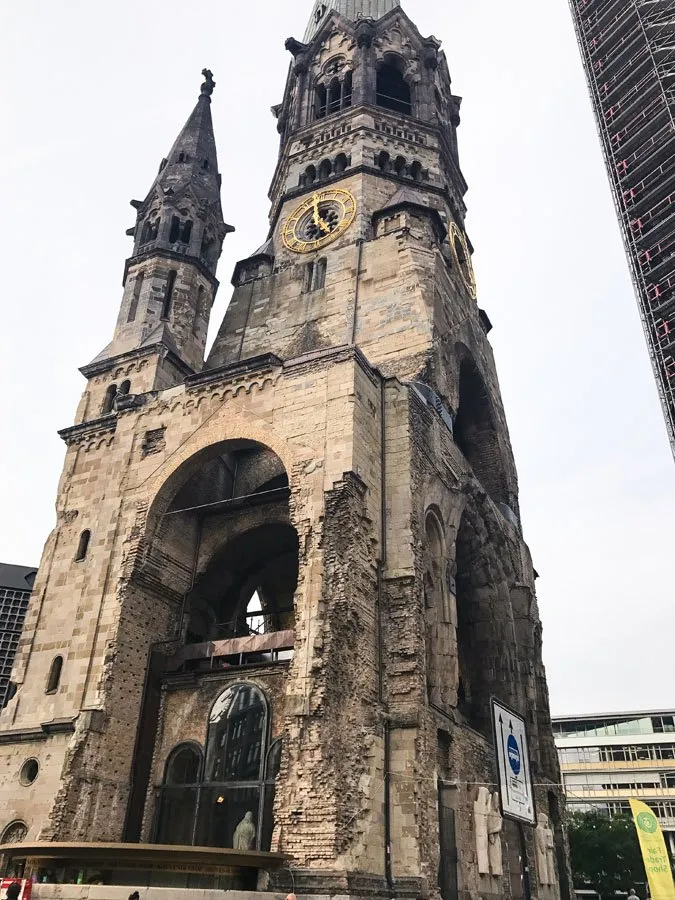
Location: within walking distance of KaDeWe, U-Bahn Kurfurstendamm
22. Take a Selfie in a Photoautomat
Scattered throughout Berlin are photo booths (called photoautomats). Insert €2, strike a pose (or four!), and take away your strip of four black and white photos. It’s a cheap, fun thing to do if you happen to spot one of these photo booths during your tour of Berlin.
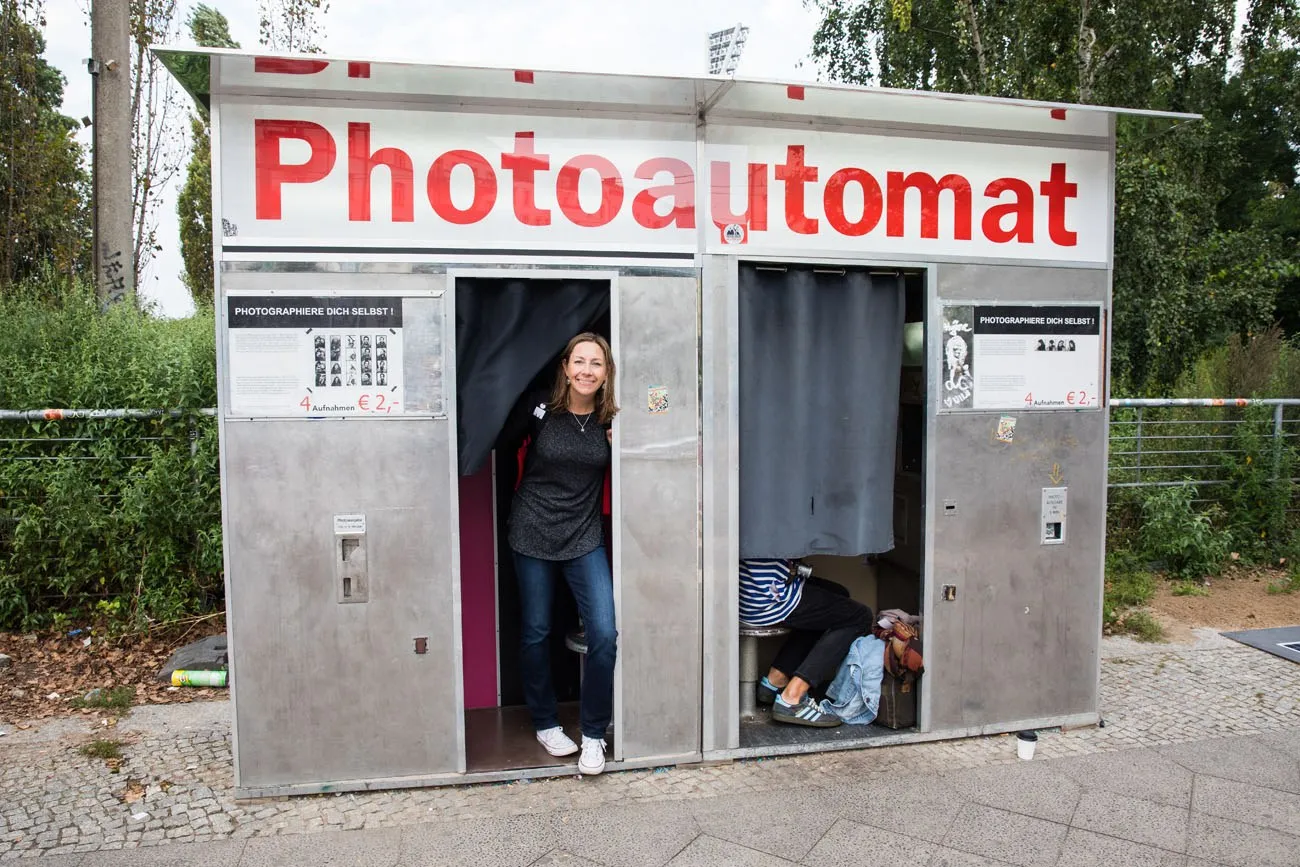
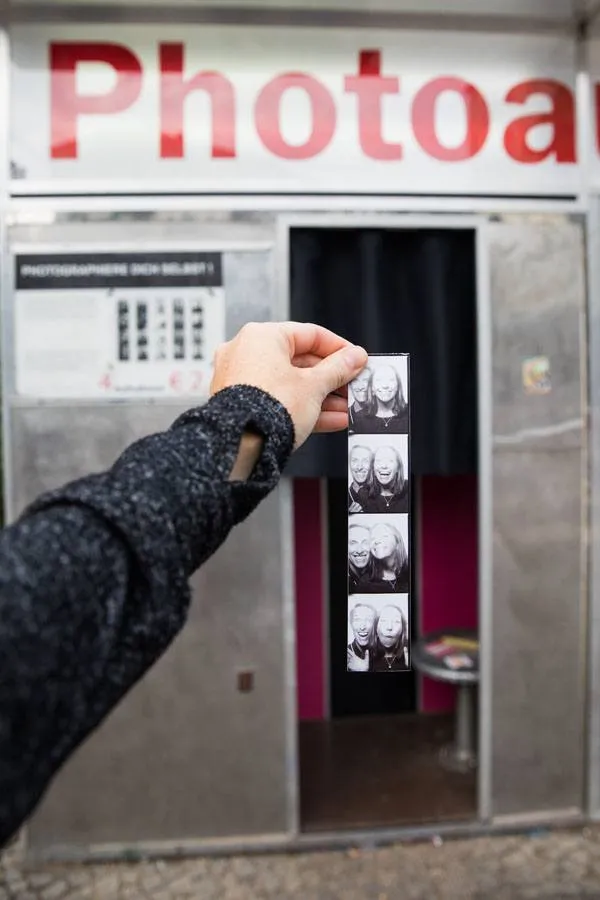
23. Tranenpalast, the Palace of Tears
This was the main border crossing between East and West Germany from 1962 to 1989. During this time, West Germans were permitted to cross the border into East Germany, and then return back to West Germany. East Germans were prohibited from crossing the border into West Germany.
The site gets its name, Palace of Tears, for the tearful goodbyes as family and friends said farewell and crossed back into West Germany.
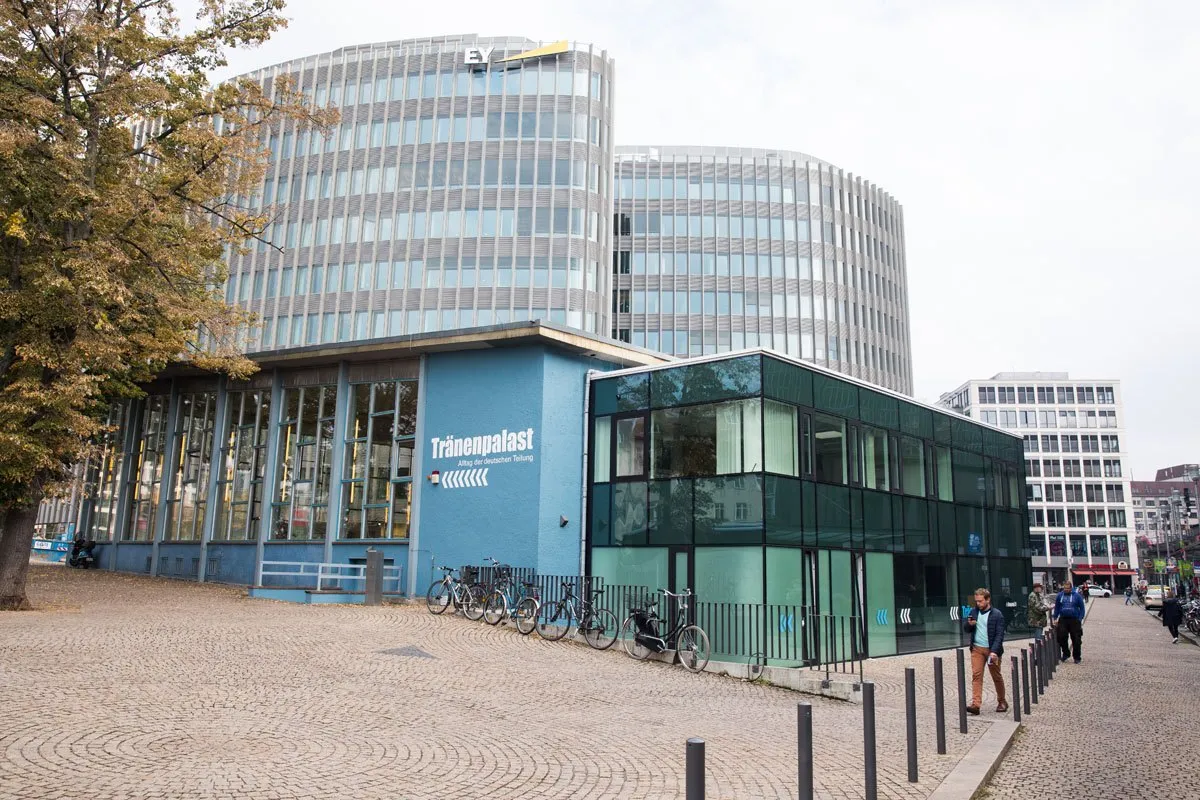
Tranenpalast is small, well-organized museum and it is a quick, free visit. This place offers another look into what it was like to live in Germany during the Cold War.
Location: Bahnhof Berlin Friedrichstrasse
Cost: free
24. Mauerpark
Mauerpark has an interesting history. During the Cold War, this narrow strip of land was part of the “death strip” along the Berlin Wall. After the fall of the wall, Berlin residents turned this narrow strip into a park by planting trees and flowers.
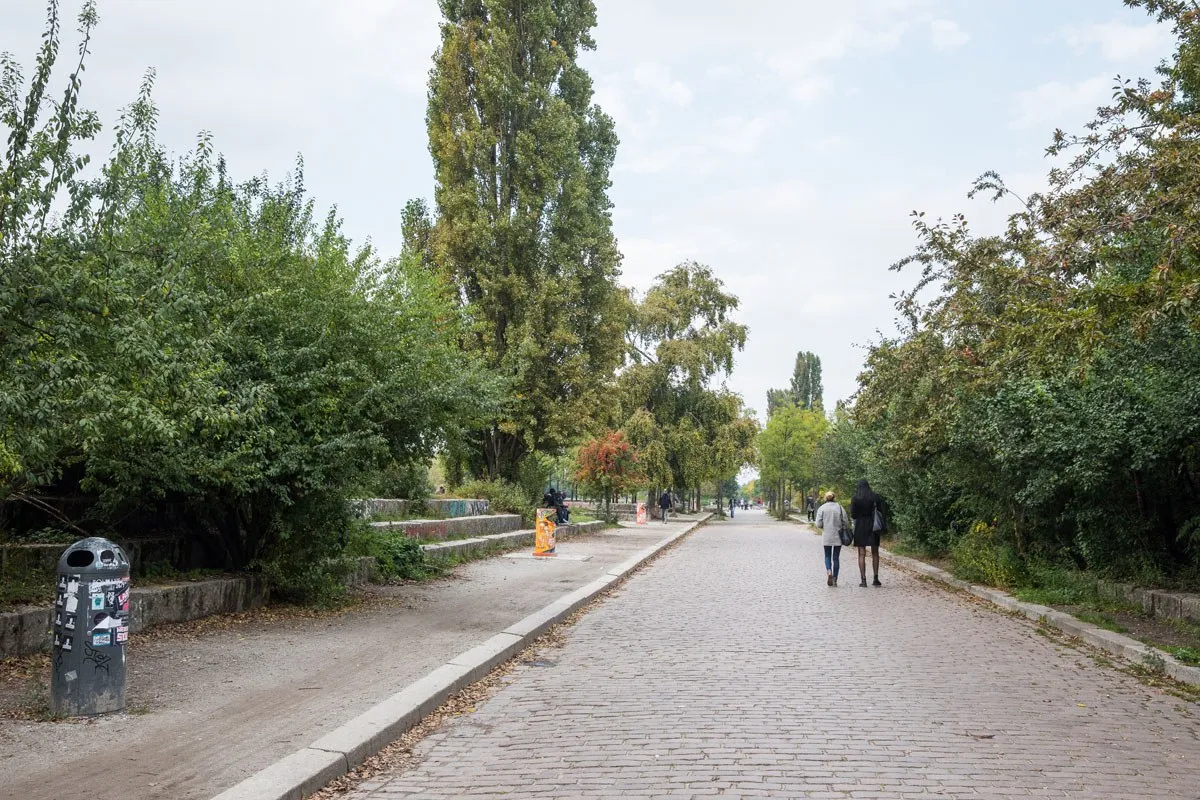
On Sunday afternoons, Mauerpark is the site of a flea market with musicians and food carts. This is the best time to visit. Tim and I visited Mauerpark midday on a weekday and it felt quiet and forlorn. I wouldn’t go out of your way to visit Mauerpark unless you can catch it while a market or music performance is going on.
Location: north Berlin, Tram M10 Friedrich-Ludwig-Jahn-Sportpark
Cost: free
25. Prenzlauer Berg
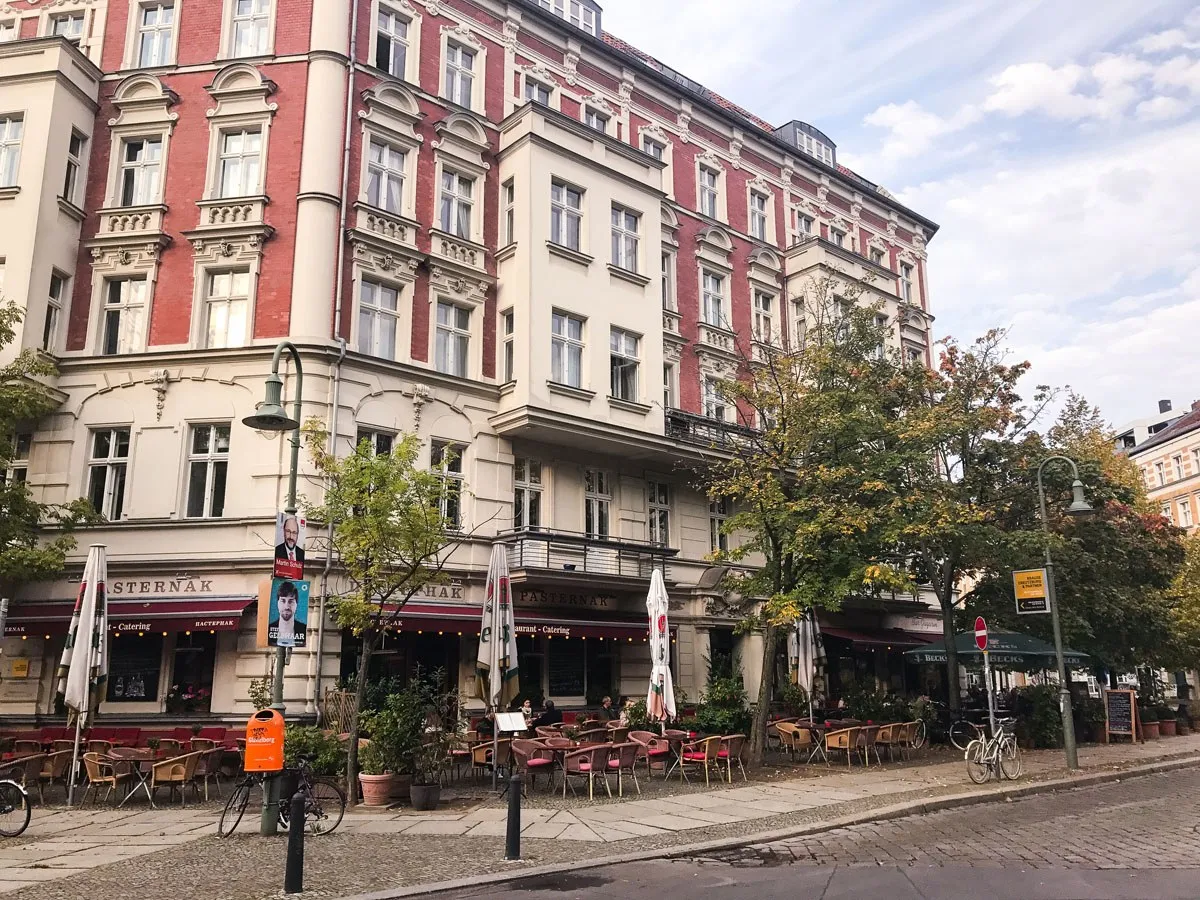
This neighborhood, which was once part of East Germany, is becoming a hot spot in Berlin. Old, historic buildings form the backdrop for up and coming restaurants, shops, and galleries. This area feels very family-oriented, with lots of Moms and Dads pushing strollers and taking their kids to the park.
26. Tiergarten and the Victory Column
The Tiergarten is the large, public garden that sits just to the west of the Brandenburg Gate. If you want to escape the insanity of the city, head here for a little peace and quiet. At the far end, to the west, is the Victory Column, erected in 1873 to celebrate Prussia’s victory in the Franco-German War. You can climb to the top for another view over Berlin.
27. Gedenkstaette Berlin-Hohenschoenhausen
This is an off-the-beaten-path destination and I’m sad that I missed it. I’m still including it in this list because people rave about the experience here.
Now a memorial and museum, this site was the main political prison of the East German Ministry of State Security, the Stasi. Visitors watch a short movie and then take a 90-minute tour of the facility. Click here for more information.
Location: Tram M5 toFreienwalder Strasse or Tram M6 to Genslerstrasse
28. Haus der Wannsee-Konferenz
This is the most disturbing place on this long list. This was the meeting place where Nazi leaders planned out the mass murder of Jews. Again, this is located off-the-beaten-path and we never made it here.
Location: The eastern suburbs of Berlin. If you have plans to also visit Potsdam, this place makes a good stop on the way. To get here, take S-Bahn 1 or S-Bahn 7 to Wannsee and then bus 411 (direction Heckeshorn) to Haus der Wannsee-Konferenz
Cost: free
So this concludes our giant list of things to do in Berlin. Now that you know what to do, learn how to put all of this together into a 5-day itinerary which also includes a great day trip idea from Berlin.
Bonus! One More Recommendation
If you have several days in Berlin and are interested in exploring nearby Germany, we have an interesting day trip idea to recommend. In just one day you can visit the fairytale bridges of Rakotzbrücke and the Bastei, take a stroll through the picturesque town of Görlitz, and cross the border into Poland. It’s a long day but you get to explore some beautiful spots in Saxony, Germany. Dare I say that this was our favorite day while we based ourselves in Berlin?
LEARN MORE: Rakotzbrücke, Görlitz, and the Bastei Bridge: Not Your Ordinary Day Trip
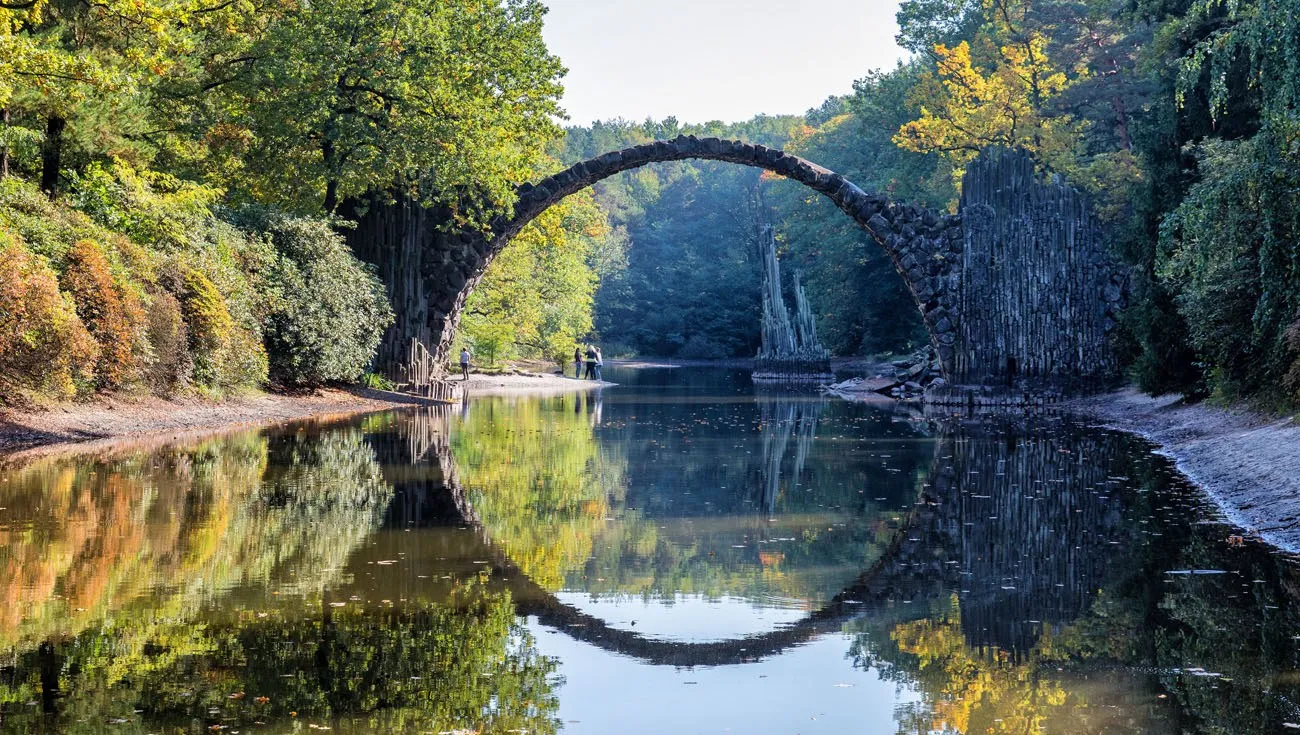
If you have any questions about the best things to do in Berlin, let us know in the comment section below.
More Information for Your Trip to Germany
BERLIN: Plan your visit with our 5 Day Berlin Itinerary and what to expect on a visit to Teufelsberg.
SAXONY, GERMANY: In Saxony, visit the fairytale bridge called Rakotzbrücke and the amazing Bastei Bridge. Put both of these together, plus the town of Görlitz, into a big day trip from Berlin.
BAVARIA, GERMANY: In Bavaria, learn how to visit Neuschwanstein palace, how to visit Dachau Concentration Camp in Munich, ride the cable car to Zugspitze, and visit Berchtesgaden.
MORE CITIES AROUND THE WORLD: Visit more cities around the world with our guides to Rome, Paris, New York City, London, Barcelona, and Athens.
Read all of our articles about Germany in our Germany Travel Guide.
All rights reserved © Earth Trekkers. Republishing this article and/or any of its contents (text, photography, etc.), in whole or in part, is strictly prohibited.
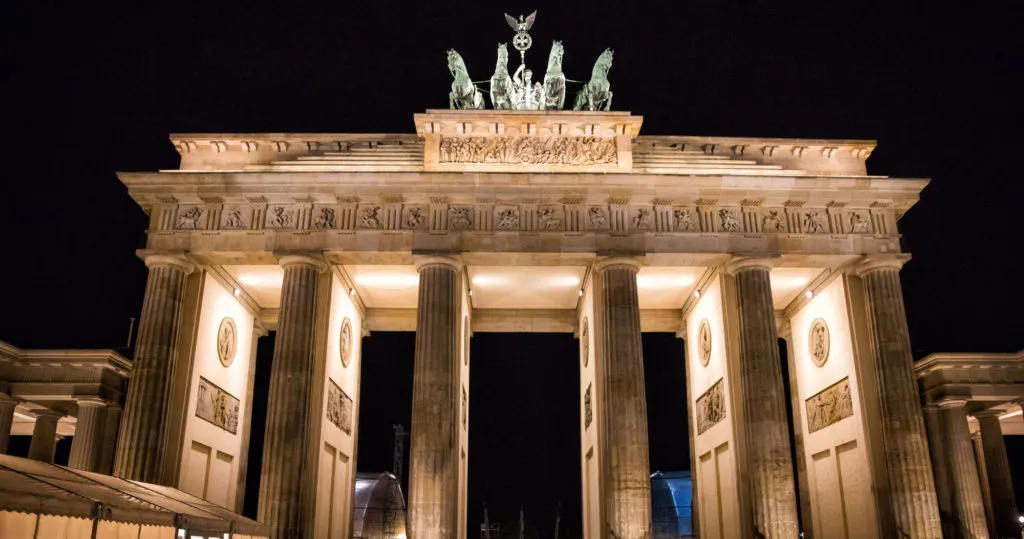
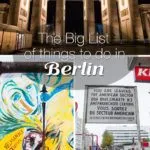

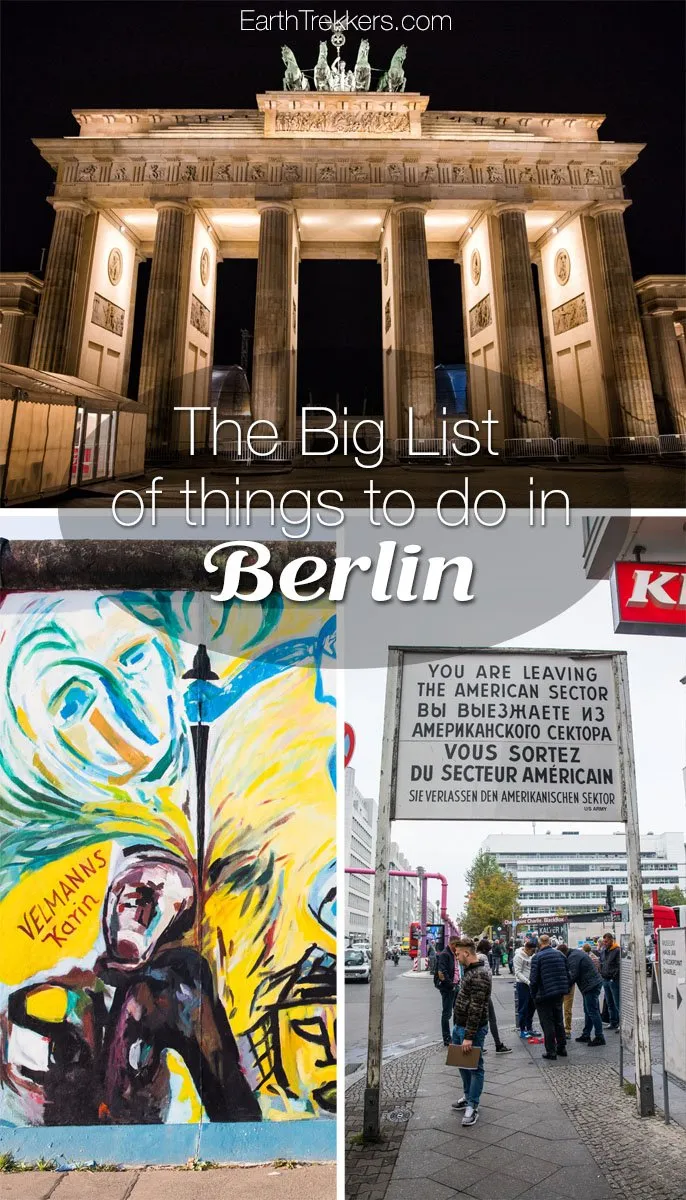
Comments 11